If you’re thinking of a trip to Lake Ohrid in Macedonia but wondering if there’s enough to keep you occupied, then keep reading. In this post, I’ll tell you about the best things to do in Ohrid, with tips from my trip in June 2025. I loved my time in Ohrid and I hope I can convince you to make Lake Ohrid your next destination!
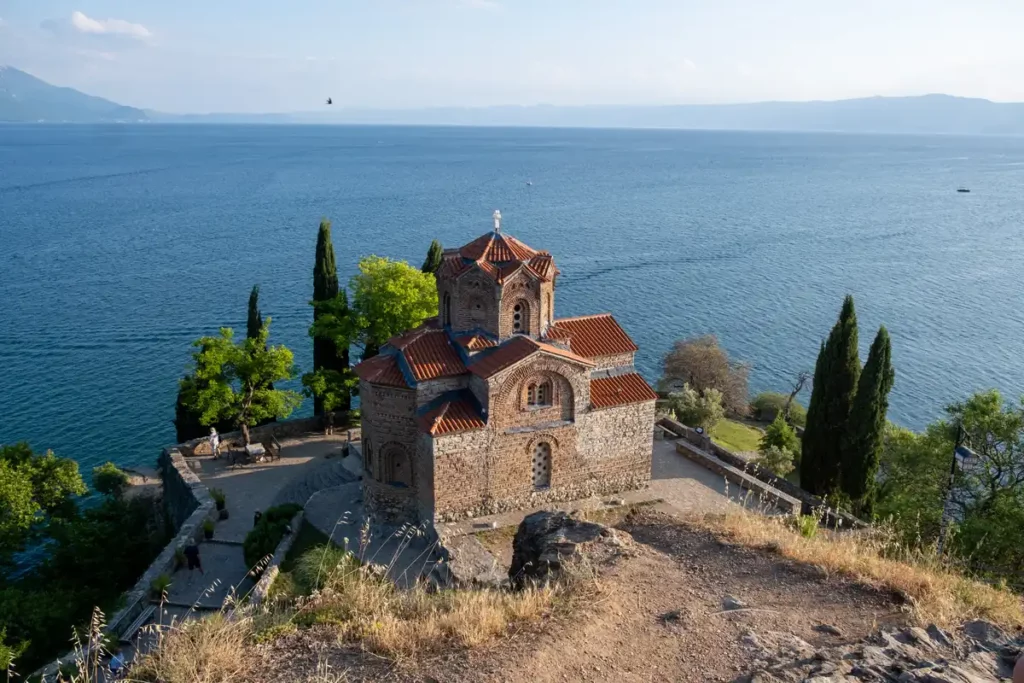
About Ohrid and Lake Ohrid
Ohrid is a city in Macedonia (officially North Macedonia) on the shores of Lake Ohrid. It’s the largest town on the lake, and the eighth-largest city in Macedonia. Both the city of Ohrid and Lake Ohrid are UNESCO World Heritage sites.
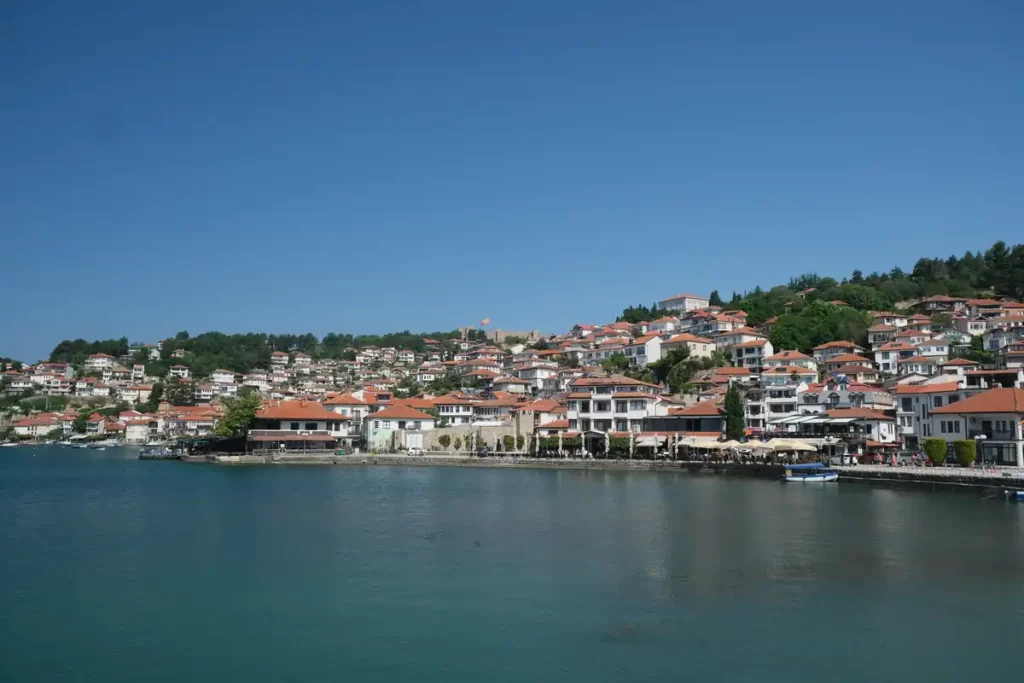
Ohrid is famous for once having 365 churches; one for every day of the year, giving it the nickname of ‘the Jerusalem of Europe’. There aren’t quite that many churches in Ohrid these days, but there are lots of beautiful, historic churches in Ohrid’s old town to explore – along with plenty of other things to see and do.
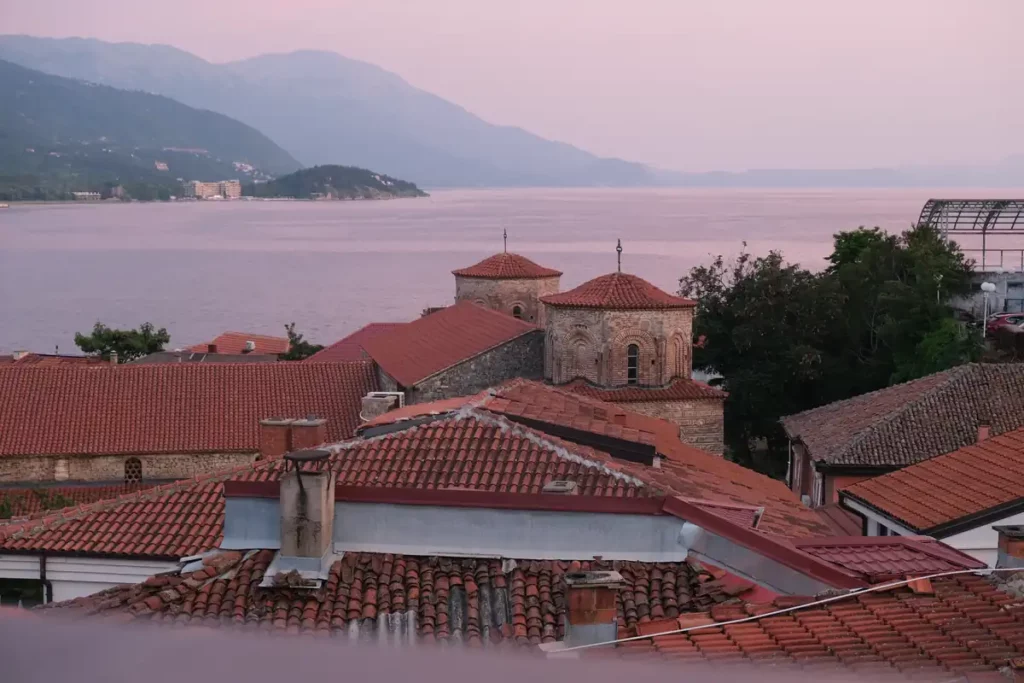
Ohrid’s history
Lake Ohrid is one of the oldest lakes in the world, and the deepest in the Balkans. The area has been inhabited since at least the late Bronze age and you can see a reconstruction of a prehistoric pile village at the Bay of Bones museum a short boat ride from Ohrid itself.
The city of Ohrid also has a long and varied history, which you can see all around you when you visit Ohrid today. The city was founded in around 2000 BC by Cadmus, the Phoenician king of Thebes, who is also said to have founded Budva in Montenegro.
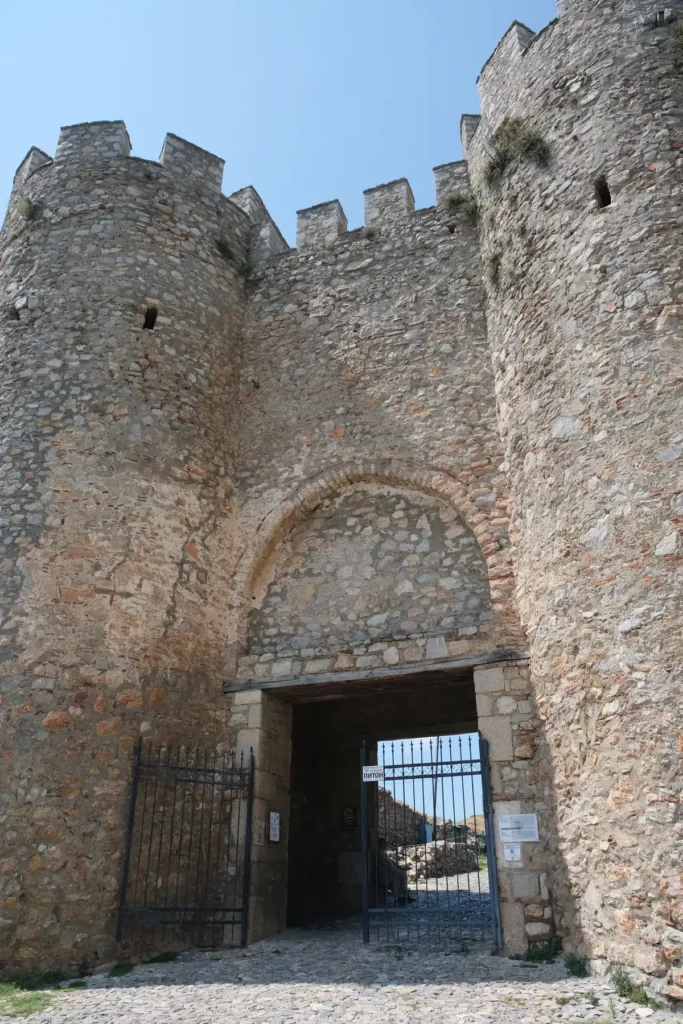
The ancient Greeks left behind their magnificent theatre, while the Roman Via Egnatia ran through Ohrid, connecting ports on the Adriatic Sea with Byzantium (modern day Istanbul). In more recent history, Ohrid was part of Bulgaria, Serbia, the Ottoman Empire, Albania and finally Yugoslavia, before Macedonia declared independence in 1991.
Where is Lake Ohrid?
Lake Ohrid is in the far south-western corner of North Macedonia. About two-thirds of the lake is in Macedonia, while the other third is in Albania.
Best things to do in Ohrid
1. See the Church of Saint John the Theologian at Kaneo
If you’ve seen photos of Ohrid, then chances are you’ve seen a picture of the Church of Saint John at Kaneo (Sveti Jovan Kaneo). The image of the domed brick church sitting on a cliff above the lake is iconic, and every bit as beautiful when you see it for real.
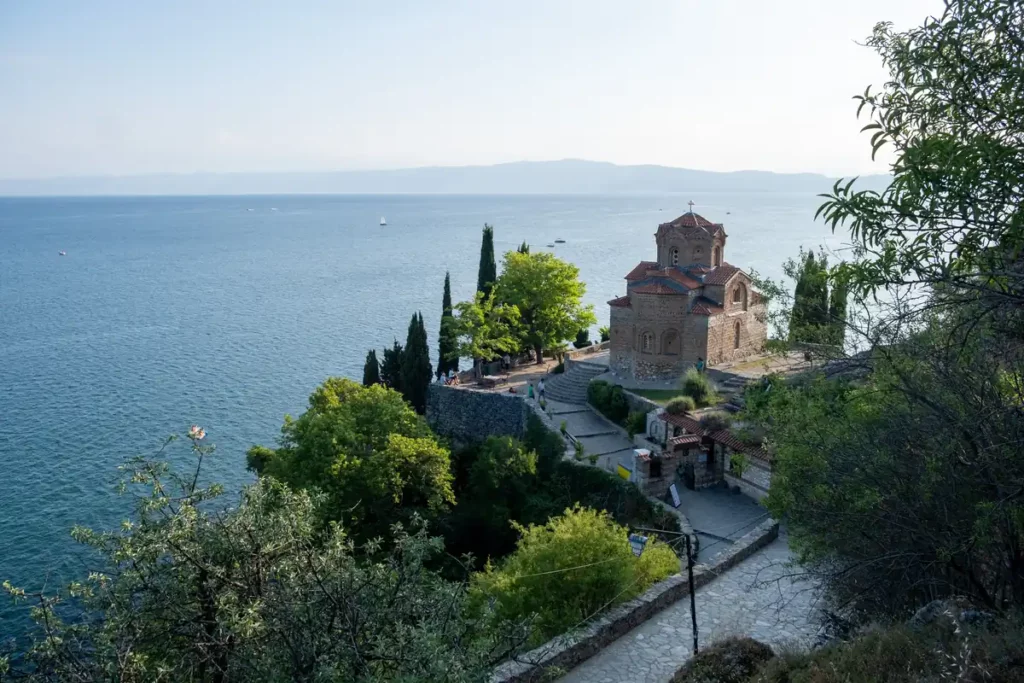
Nobody knows exactly how old the church is, but it’s believed that it probably dates from the 13th century.
The church is on the western edge of Ohrid’s old town and it’s an easy and beautiful walk from the centre. It’s free to enter the grounds; going inside to see the atmospheric interior costs 150 MKD (around £2/$3).
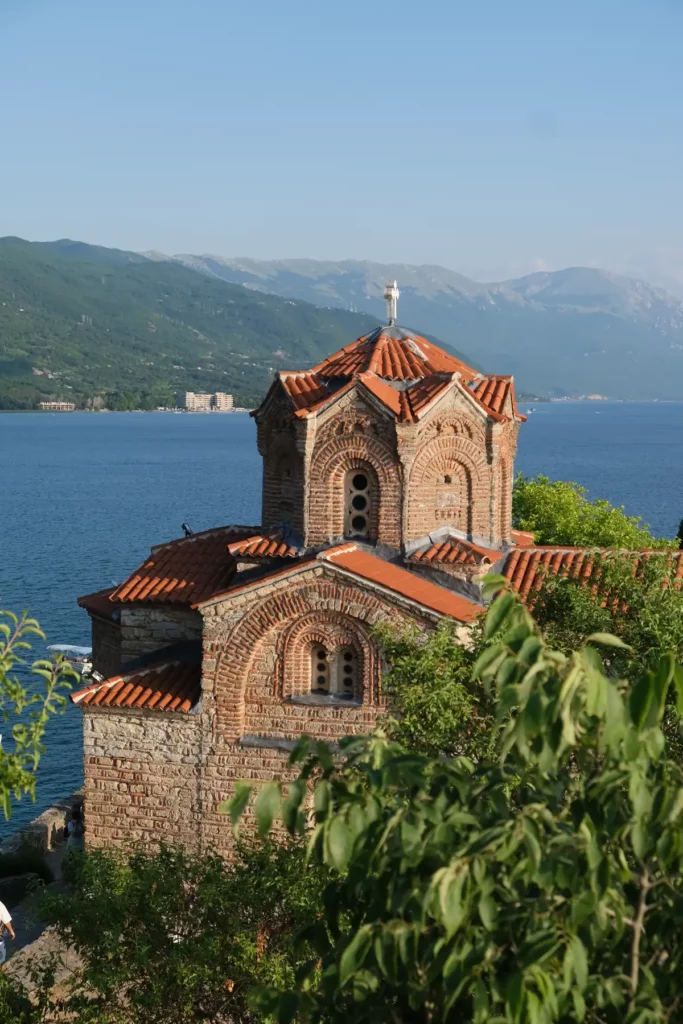
Paths lead up the steep hill behind the church towards Samuel’s Fortress, and even if you’re not planning to hike up through the forest, it’s still worth going up a short distance to see the gorgeous view of the church with the lake beyond. It’s particularly lovely as the sun starts to set.
2. Walk the ramparts at Samuel’s Fortress
There isn’t actually much inside Samuel’s Fortress, but you can see the ramparts from all over the town. It costs 150 MKD (around £2/$3) to go inside and climb the steps up to the walls and tower, from where there’s a wonderful view across Ohrid’s old town and the lake.
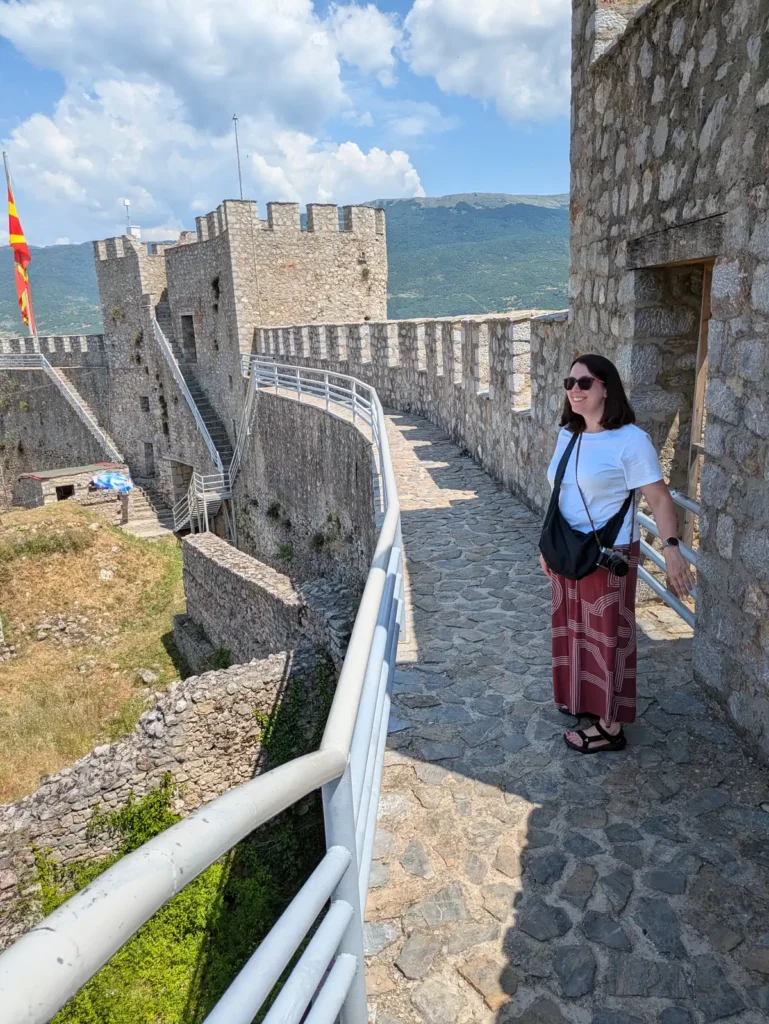
There’s been a fortress on this site at the top of the hill overlooking Ohrid since at least 209 BC. The castle has been demolished, rebuilt and expanded many times, but most of the walls and the towers date back to the reign of Tsar Samoil in around 1000 AD, giving the castle the name it’s known by today.
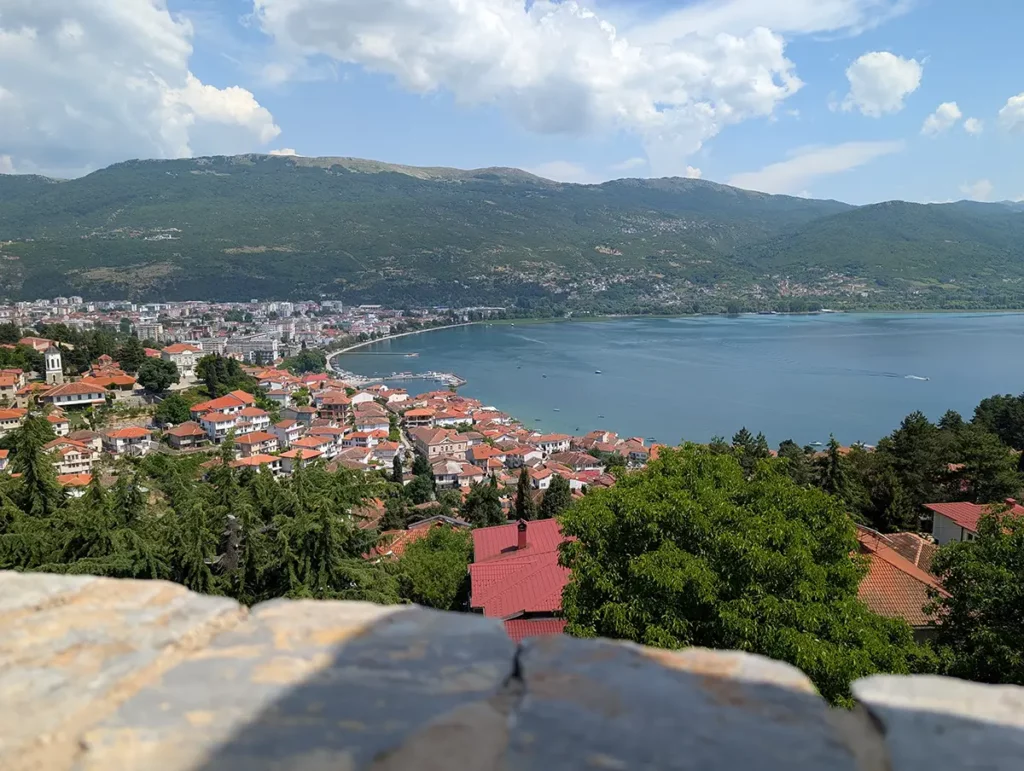
Samuel’s Fortress covers the top of the hill, and the fortifications once extended all around the old city, all the way to Ohrid’s port. You can still see parts of the wall at the Upper Gate and at Lower Gate Square.
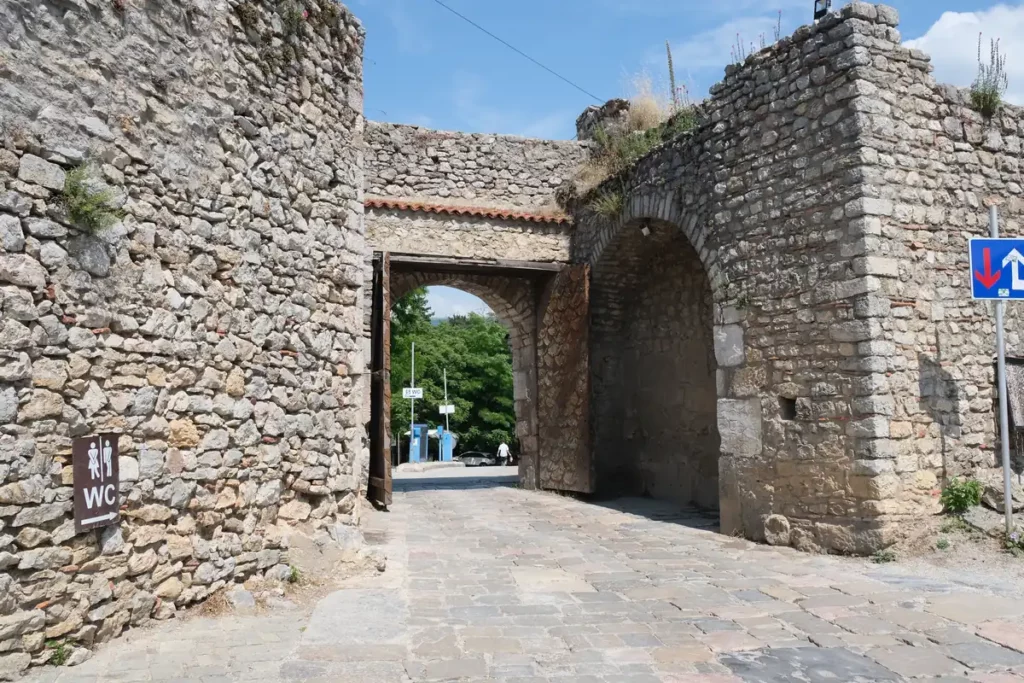
3. Enjoy Ohrid Boardwalk
A more recent addition to the list of things to do in Ohrid is the boardwalk which connects the old town to Potpesh Beach and the path to Saint John’s church at Kaneo.
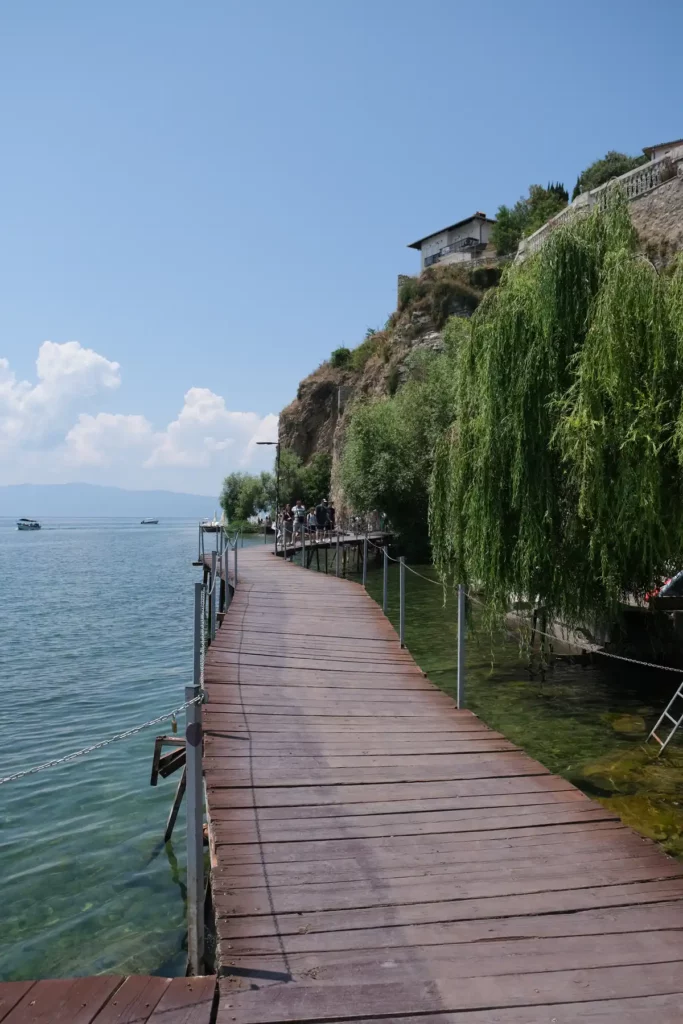
The wooden boardwalk lets you walk over the lake, underneath cliffs and weeping willow trees to the little beach and restaurant at Potpesh, then along narrow streets to the restaurants at Kaneo beach and Saint John’s church beyond. If you look down as you walk across the boardwalk, you’ll see hundreds of little fish in the clear water.
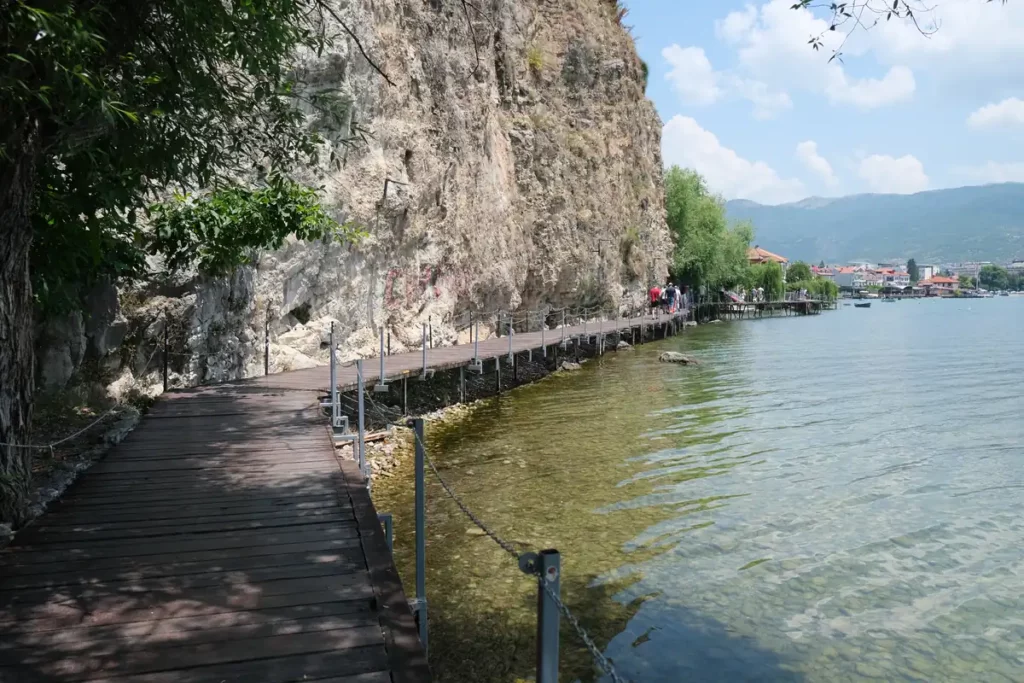
To find the boardwalk, head from the centre of town to the Church of Saint Sophia, then turn left towards the lake. The boardwalk starts at the end of Ilindenska street.
4. Explore the old town
I loved walking through the streets in the old town. The traditional houses hang over the stone paved streets, and every so often there’s an ancient church, a section of the old city walls or a view of the lake. The authorities discourage driving in the old town, so there aren’t many cars and it’s all just gorgeous in an understated, stripped-back way. I knew that Ohrid was a UNESCO World Heritage site, but I wasn’t expecting it to be quite this pretty.
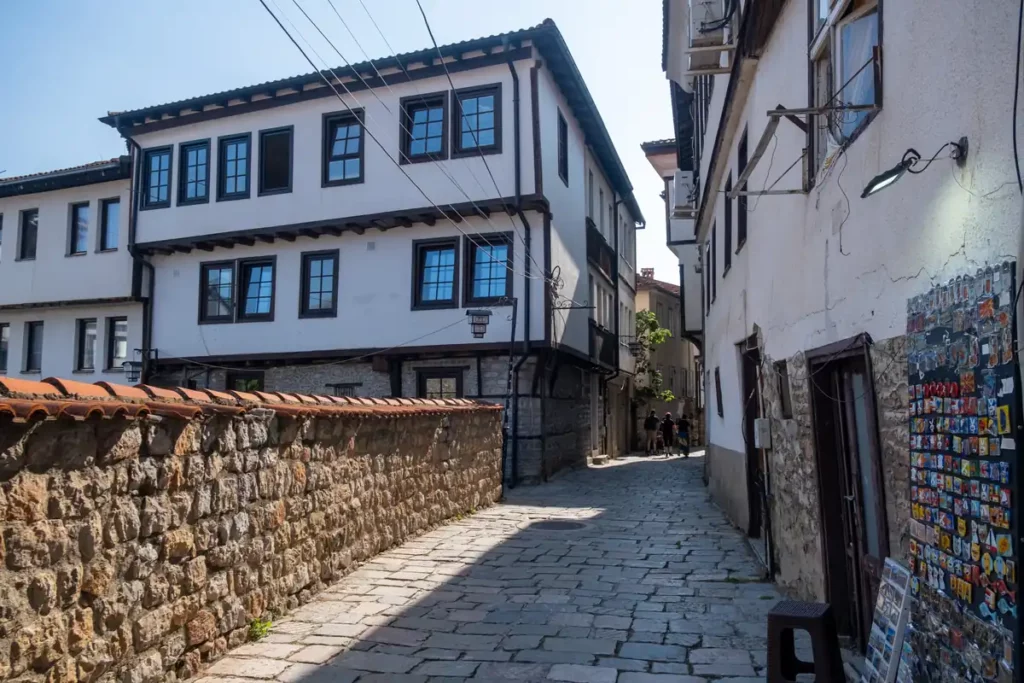
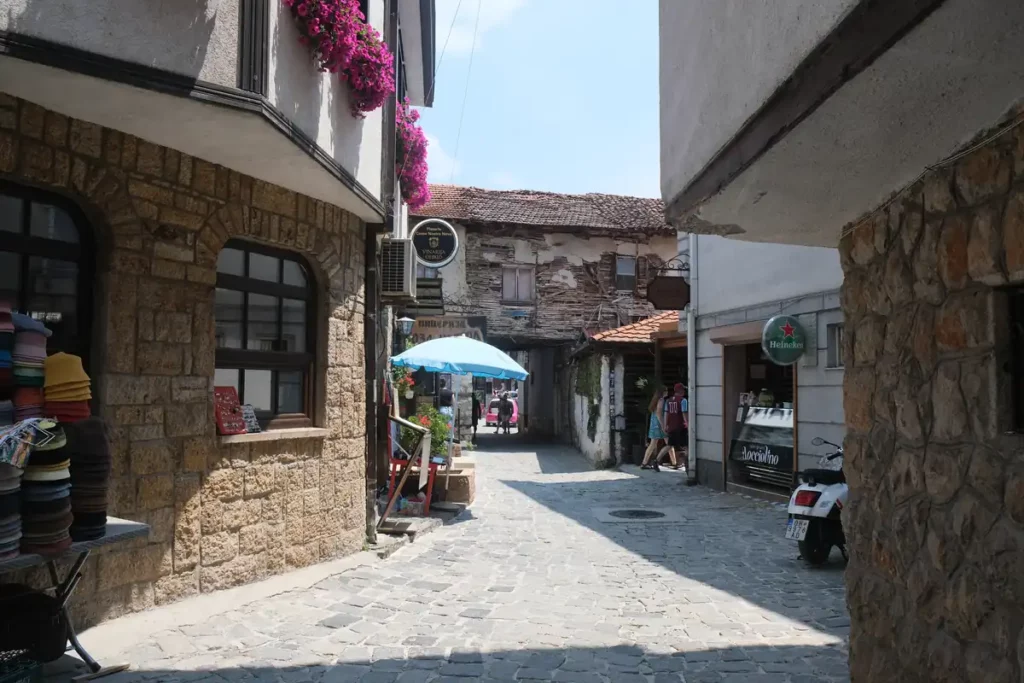
There are lots of bars, restaurants and shops all over the old town, and while there are lots of AirBNBs and digital nomads, it does still feel like a real neighbourhood.
One of my favourite things was the street lights. They’re all in the shape of a white Ohrid house, with the characteristic three storey shape. The house they’re modelled on is across the street from the Saint Sophia church.
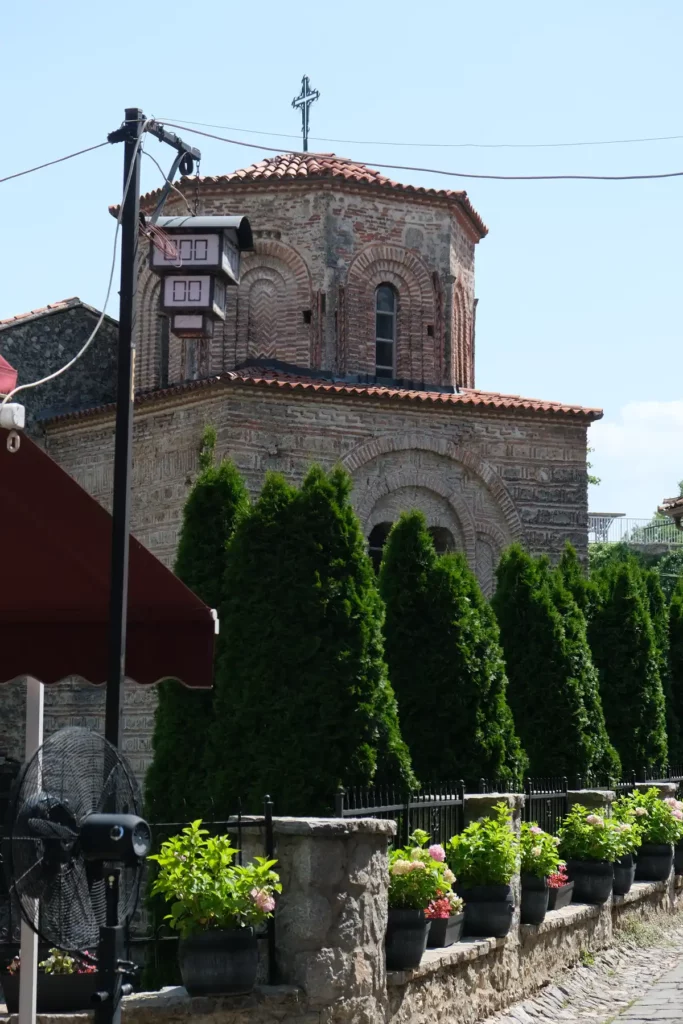
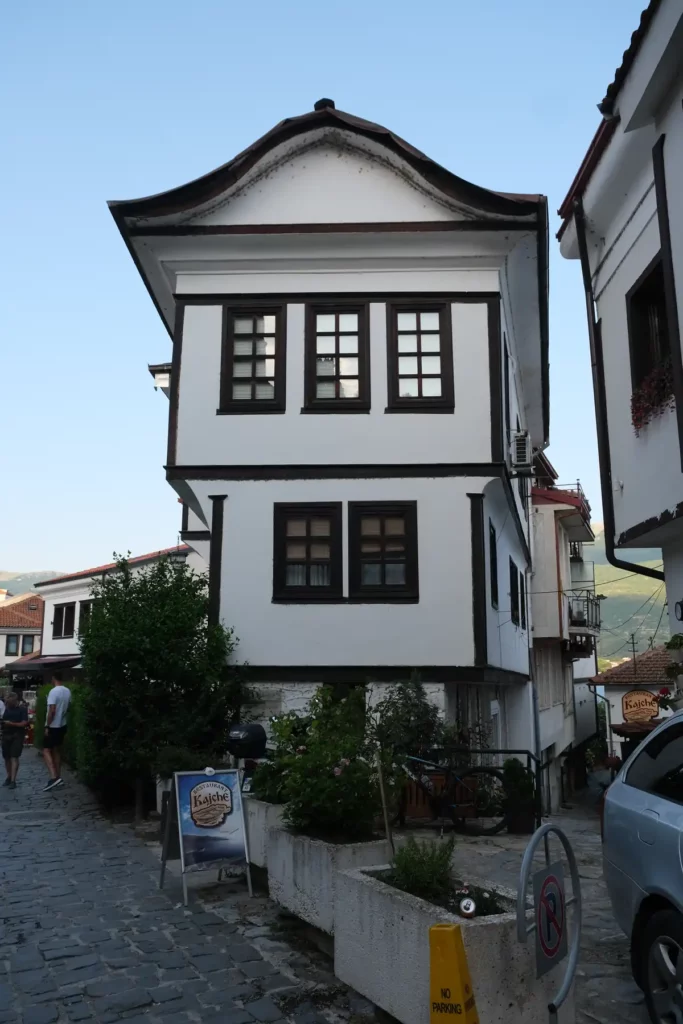
5. Go shopping on old Bazaar street
Old Bazaar Street is on the eastern edge of Ohrid’s old town and has a different vibe to the peaceful narrow streets around Saint Sophia. Here the street is wide, vibrant and full of shops, restaurants, coffee bars and places to get a snack. There seemed to be lots of locals as well as tourists, and it’s a fun place to sit and watch the world go by.
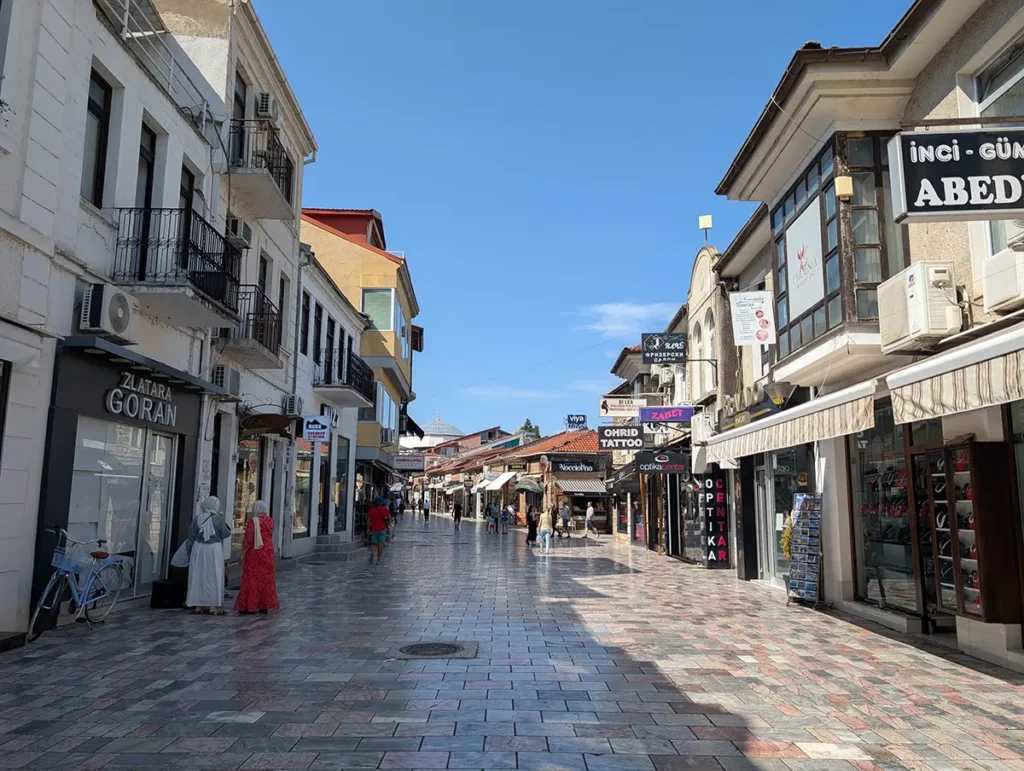
There are several mosques in this part of the city, including the magnificent Ali Pasha Mosque, which is believed to be one of the oldest in Macedonia.
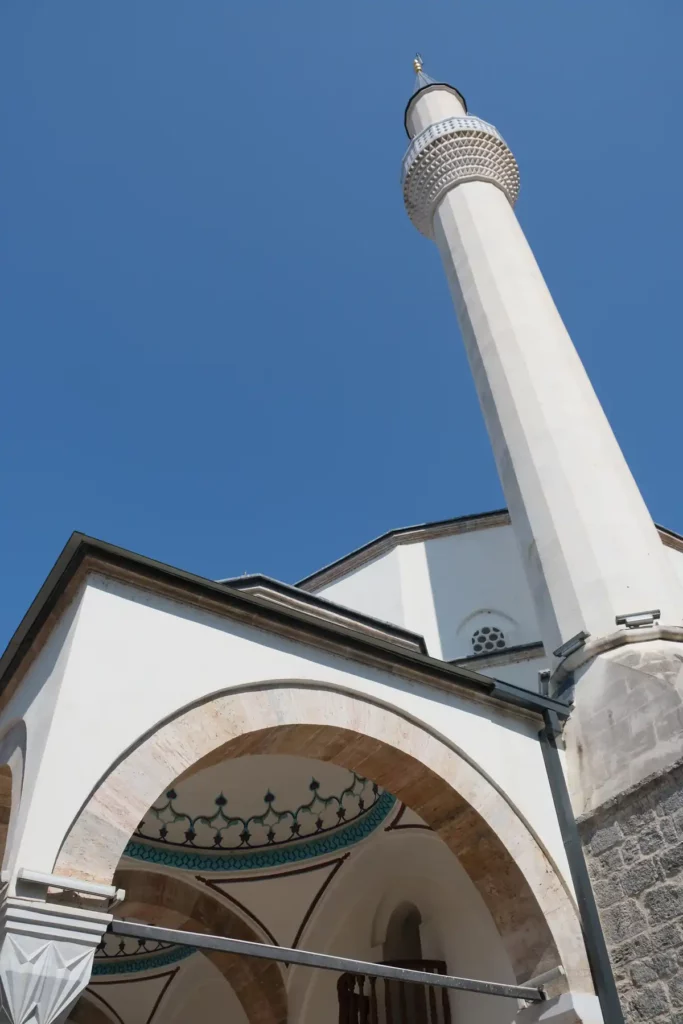
6. Go to the beach
Lake Ohrid doesn’t have many sandy beaches, but there are plenty of places where you can rent a sun lounger by the water for the day.
Of the beaches in Ohrid itself, Potpesh Beach was my favourite, as it was a short and picturesque stroll along the Ohrid boardwalk from our apartment and the bar was nice with a lovely view of boats going back and forth. You can rent kayaks and paddleboards if you fancy exploring the coast.
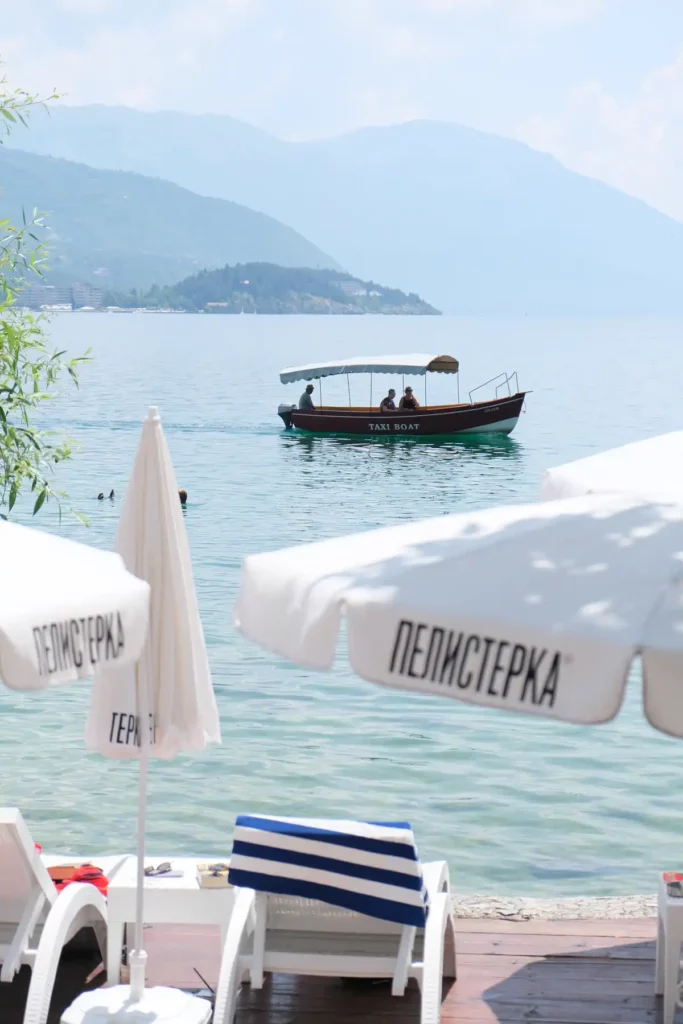
If you walk a little further towards the Church of Saint John you’ll come to Kaneo beach, which is a little quieter.
Saraiste Beach is a small stretch of pebble beach in the middle of the old town. It didn’t have the relaxing vibe of Potpesh and the water didn’t look as clear, but it’s very convenient if you’re staying in the old town.
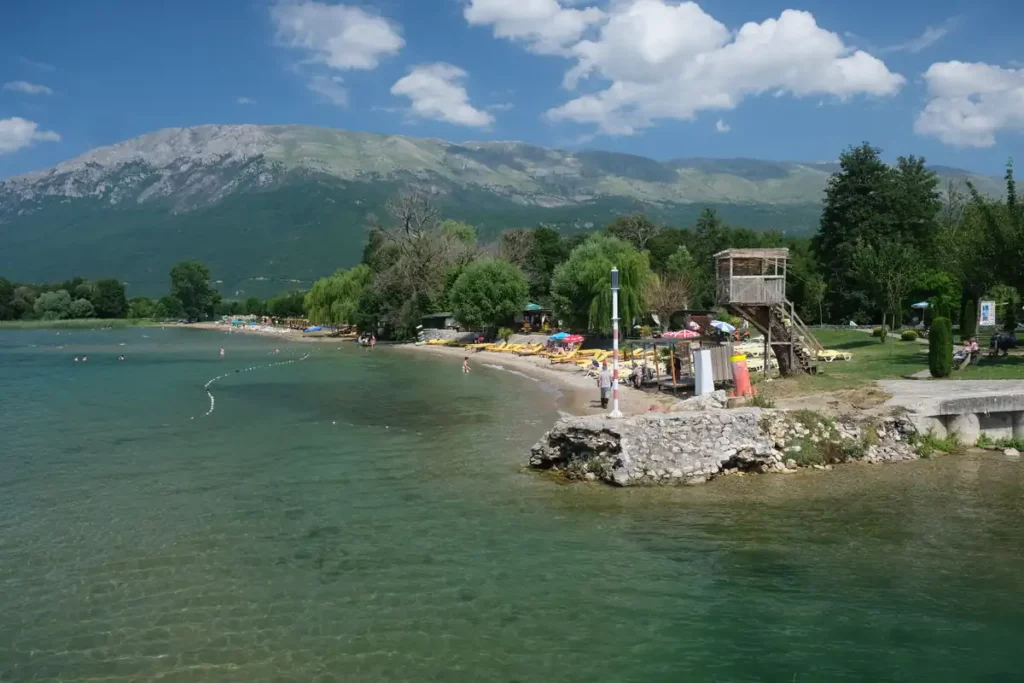
If you don’t mind a walk or taxi to get there, Gorica Beach to the south of Ohrid city centre is pretty with lovely sunsets. The best beach I saw on Lake Ohrid was at Saint Naum which is at the southern end of the lake but easily accessible on one of the many boat tours from Ohrid.
7. Visit the Church of Saint Sophia
The Church of Saint Sophia in Ohrid is one of Macedonia’s most important monuments, although it’s a little overshadowed by its more strikingly-situated neighbour the Church of Saint John.
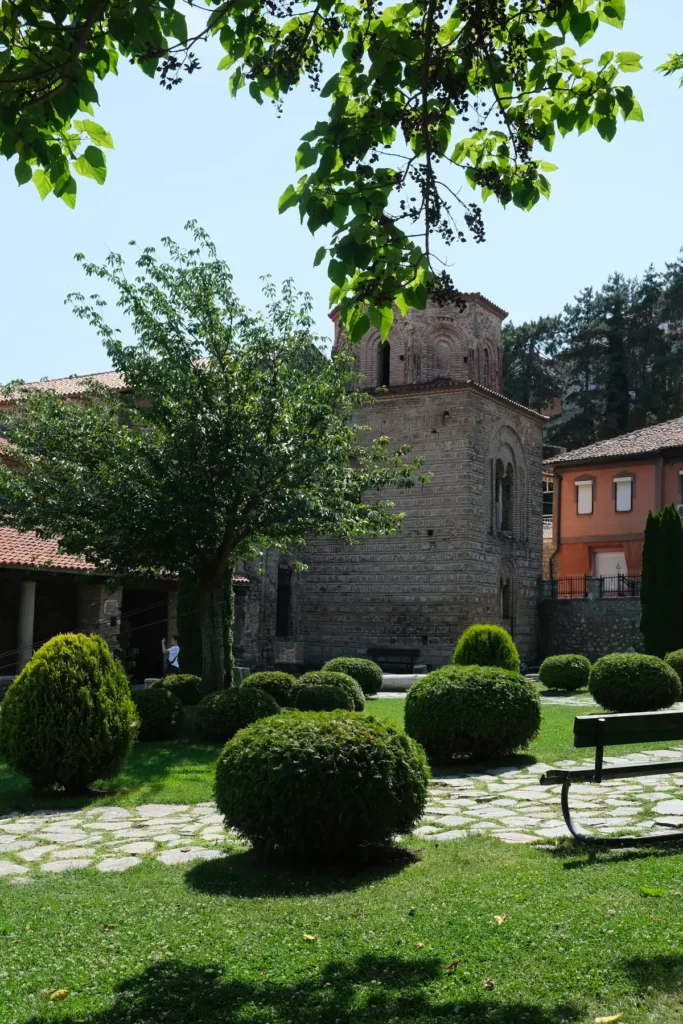
The Church of Saint Sophia was built in around 850 AD and rebuilt in the 10th century. It was a mosque during Ottoman rule but if you go inside (and you really should!) you’ll see beautiful frescoes from the 11th, 12th and 13th century. It’s surprisingly light inside and the frescoes really are gorgeous.

The gardens around the church are really pretty and there are benches in the shade, as well as a drinking water fountain. Look out for the resident tortoises – they’re Hermann’s Tortoises, a species that’s native to this part of the Balkans. I also saw them plodding around in Saint Naum.
8. Visit Plaosnik
The Plaosnik site is just below Samuel’s Fortress and is made up of the Byzantine Saint Clement and Panteleimon Church and surrounding archaeological site. It’s believed that Saint Clement taught Christianity and Cyrillic alphabet here, making it the first Slavic university.
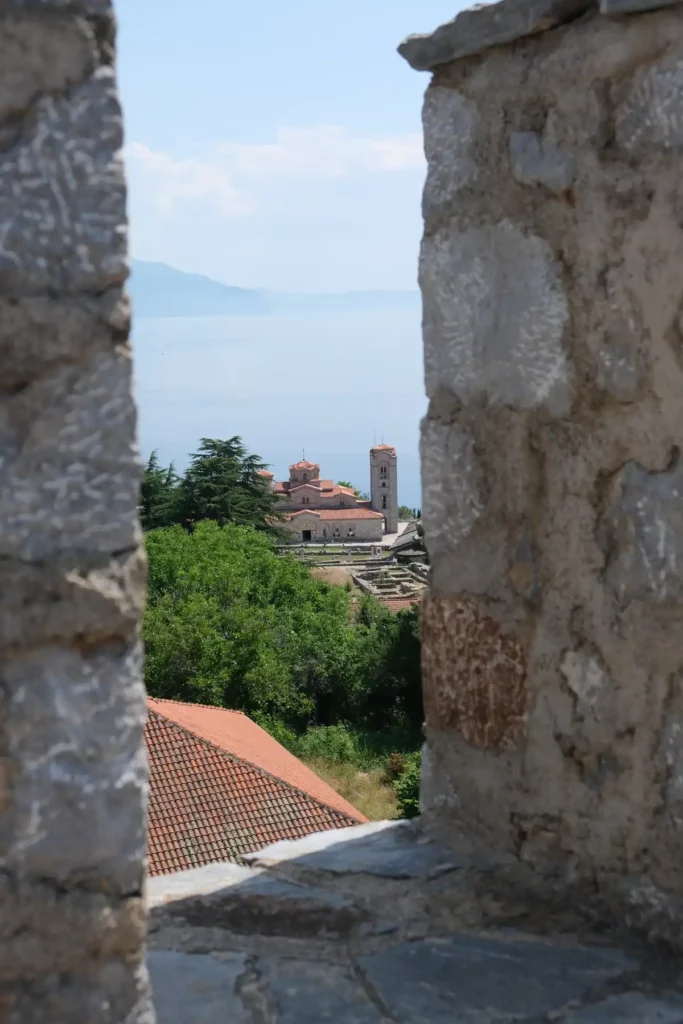
Like the church of Saint Sophia, Saint Clement and Panteleimon Church became a mosque during Ottoman rule. At the Plaosnik site, the mosque was built on top of and around the old church, and the Saint Clement and Panteleimon church has only been revealed again over the last 30 years.
Other things you can see at the Plaosnik site include the remains of an even earlier church and traces of Roman occupation.
9. National Workshop for Handmade Paper
The National Workshop for Handmade Paper is on one of the old town’s prettiest streets, but I have to confess that I’d walked past it a few times before I noticed it!
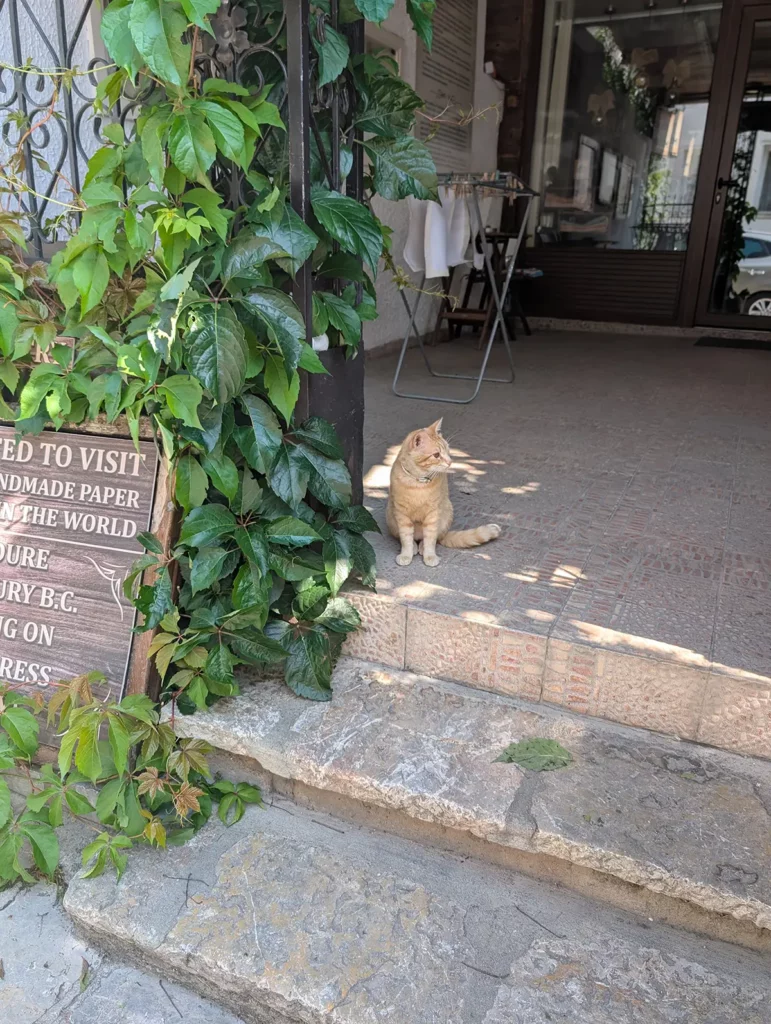
The little workshop has one of only two copies of the Gutenberg Press anywhere in the world, and you can also see how paper is made in the traditional Chinese way by pressing and drying wood pulp. There are always demonstrations going on and you can buy souvenir prints made on the Gutenberg press.
10. Ancient Theatre of Ohrid
The ancient Greek theatre set into the hillside below Samuel’s Castle is over 2000 years old and is the only one of its type in Macedonia. It’s just off the street that leads down from the Upper Gate to Saint Sofia Church and the boardwalk, and you can just wander in for free, sit on the stone seats and imagine all the events it must have seen.
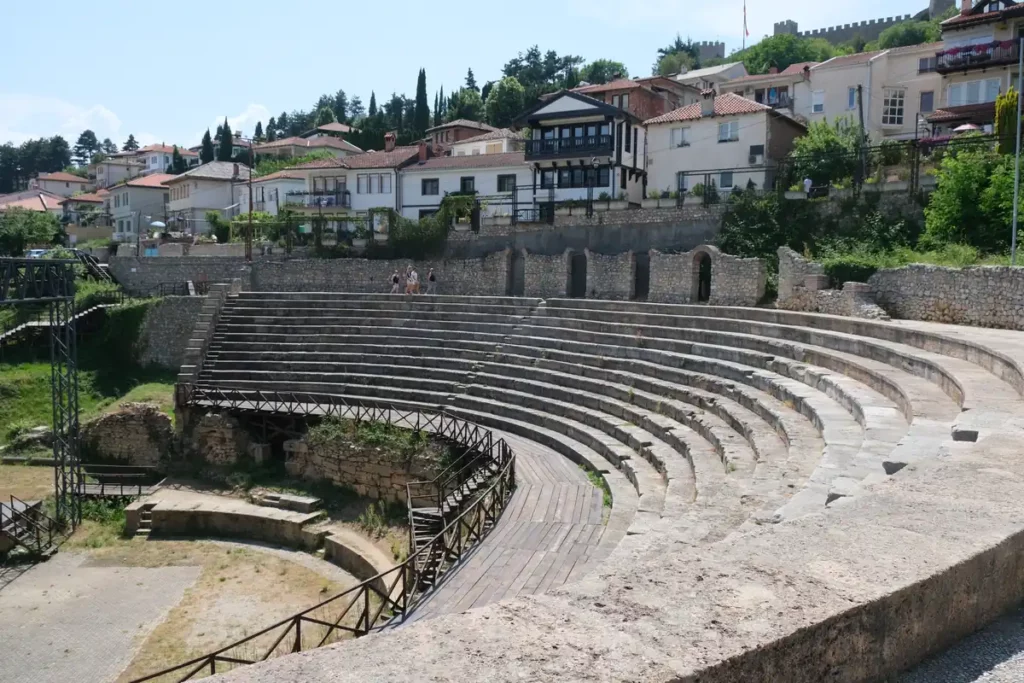
The theatre was excavated and restored in the 20th century. If you visit Ohrid during one of the summer festivals, you might be able to catch a performance there.
11. Have a meal overlooking Lake Ohrid
There are loads of cafés, bars, restaurants and beach clubs lining the shore of Lake Ohrid. One of the most popular and romantic is Kaneo restaurant on Kaneo beach, near the church of St John.
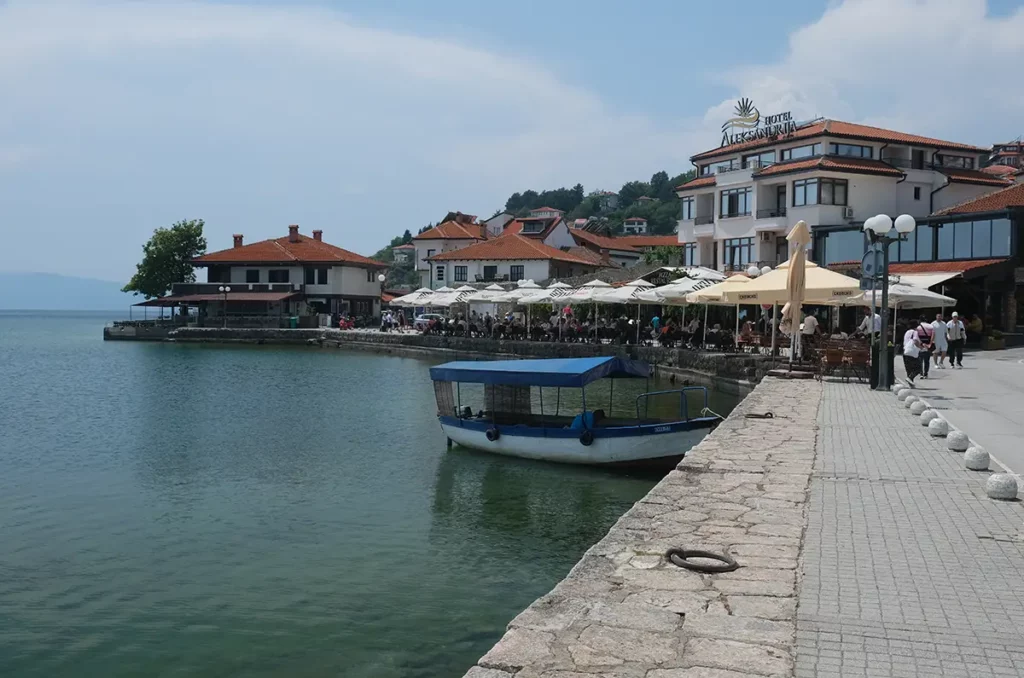
If you eat meat and fish you’ll eat very well for very reasonable prices in Ohrid. There are lots of local specialities to try, including trout from the lake, grilled meat, stews and a baked bean and sausage dish that you’ll see everywhere. A lot of the food is very hearty, which feels a bit odd in the summer heat but makes a lot more sense when you realise that Ohrid does get cold and even snowy in the winter.
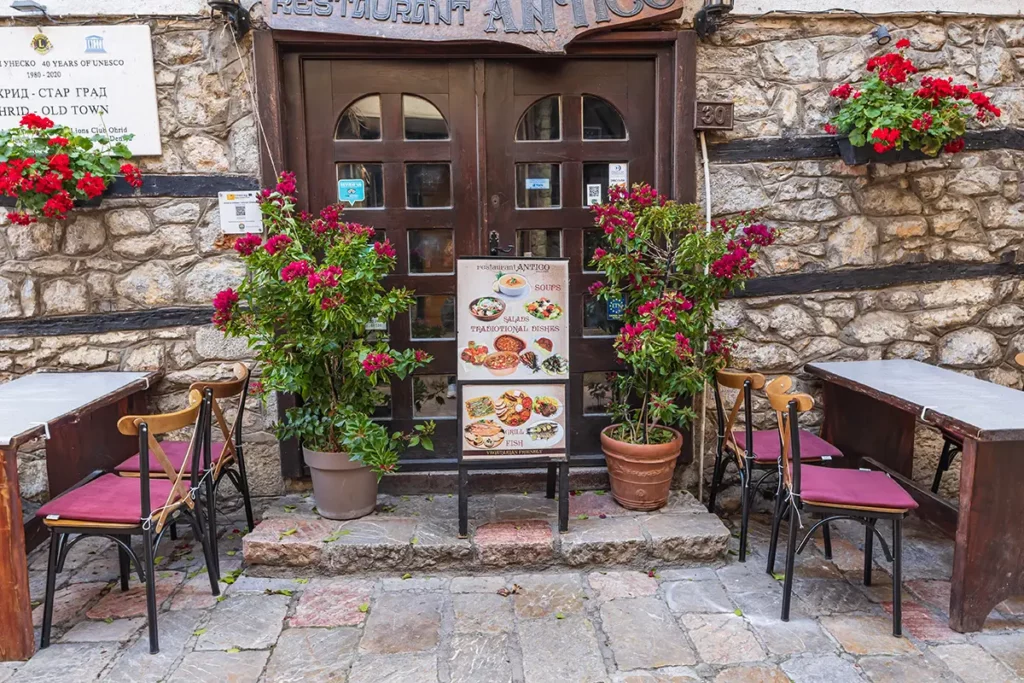
If you’re vegetarian like me then things get a bit more challenging (I ate a lot of pizza and burek!), and if you’re vegan then it can be very difficult to find something to eat. Antiko Restaurant doesn’t have a lake view but it does serve Macedonian dishes, several of which have been adapted to be vegetarian or vegan.
12. Take a boat trip across the lake
Trust me, when you get to Lake Ohrid you’ll be longing to get out on the water. You can go out under your own steam on a kayak or paddleboard, or take one of the taxi boats to explore the coast around Ohrid.

Taxi boats and excursion boats of all sizes from little rectangular catamarans to big lake cruise boats leave from the dock in front of Ohrid City Park.
Would you like to save this?
13. Visit Saint Naum Monastery
One of the most popular things to do in Ohrid is to take a boat trip to Saint Naum Monastery on the south coast of the lake. The journey takes around 90 minutes down the eastern shore of the lake and passes by Lake Ohrid landmarks like the Bay of Bones and Villa Biljana, which was once the summer retreat for the Yugoslav president. If you don’t fancy the boat, there is a bus from Ohrid.
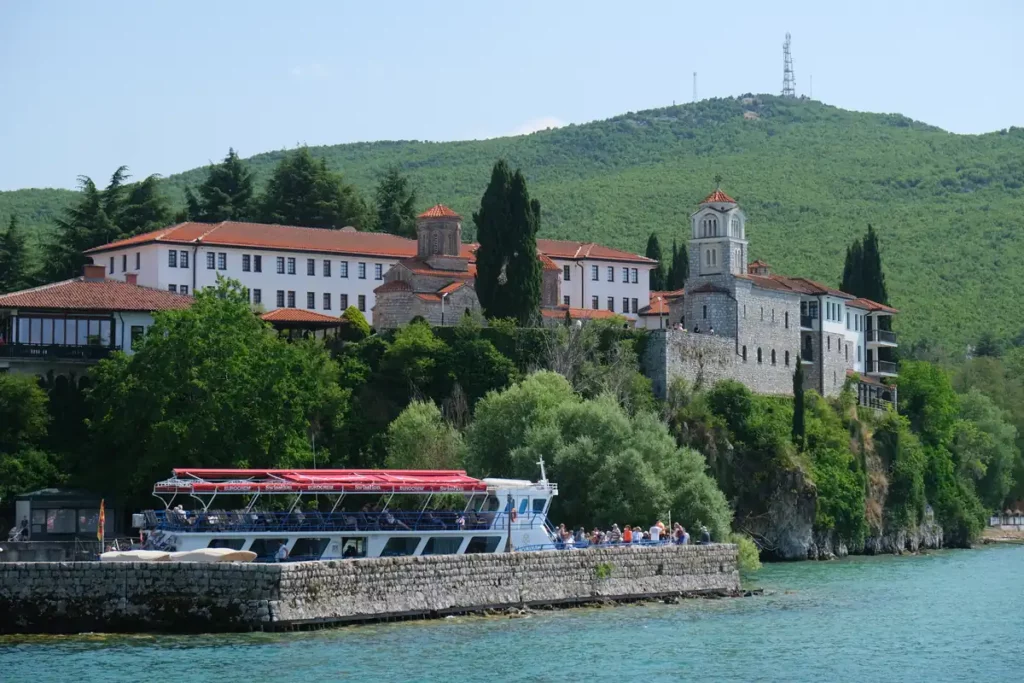
Once at Saint Naum, you can relax on the beach, go for a meal at one of the restaurants (I loved the ‘floating’ Restaurant Ostrovo) or go and visit the beautiful monastery and little churches in the area.
Don’t miss going inside the church of Sveti Naum. It was rebuilt in the 16th and 17th century and is full of moody frescos and the tomb of St Naum. A legend says that if you put your ear to the tomb you can hear the saint’s heart beating over 1000 years after his death.
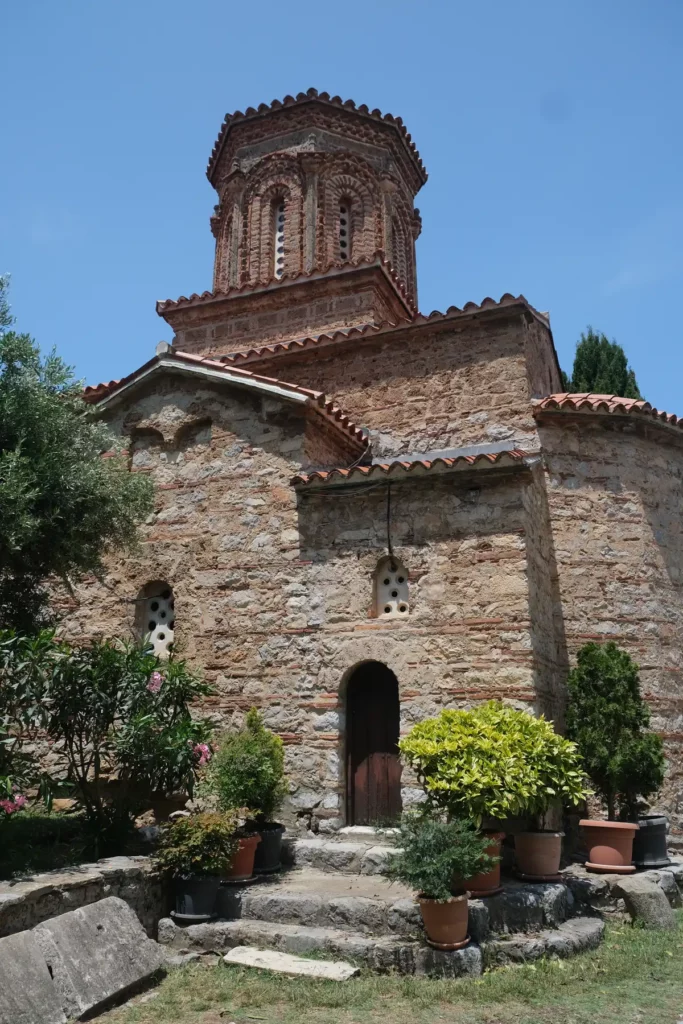
Outside, you can see worshippers lighting slender candles, admire the rose garden and meet the peacocks.
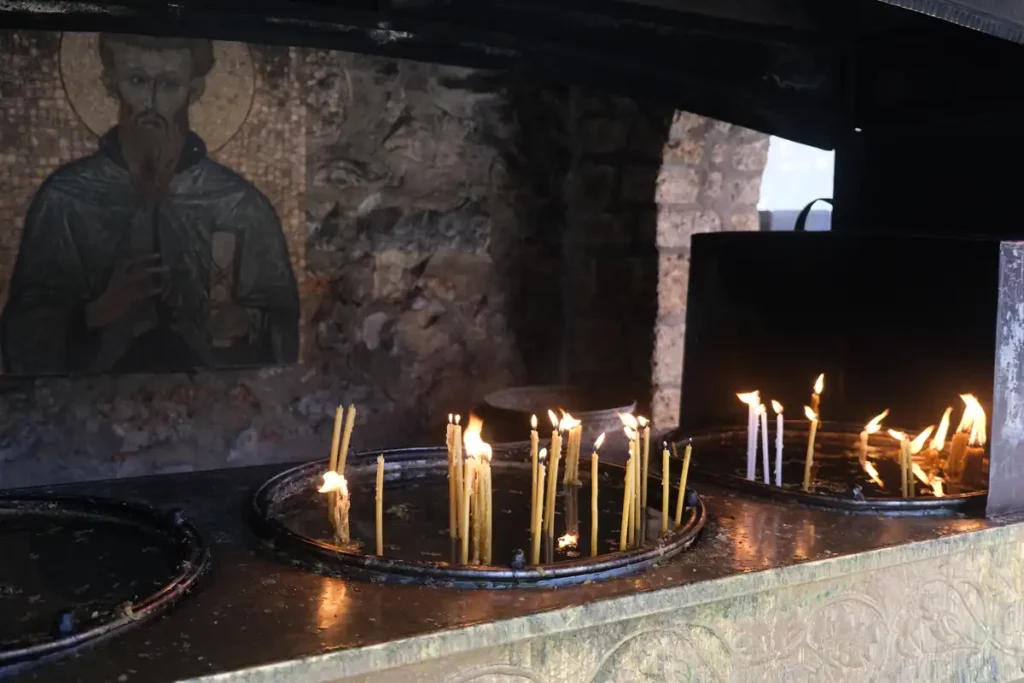
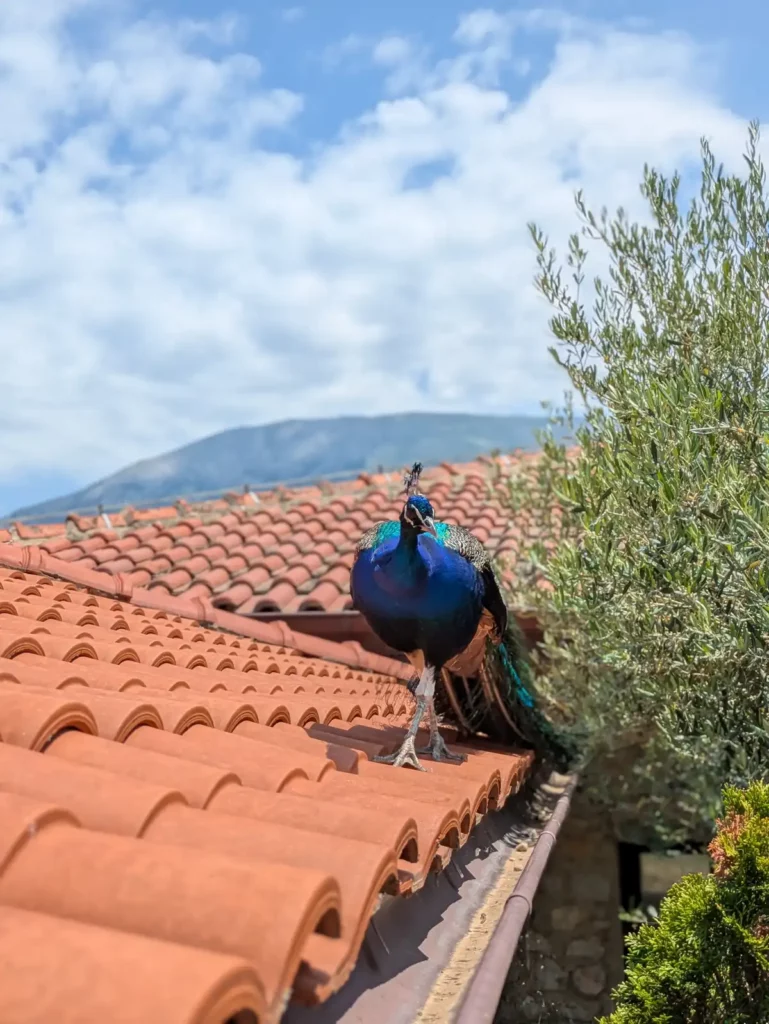
14. See the Black Drin Springs
Saint Naum is also famous for the beautiful Black Drin Springs, which emerge in the woods behind the monastery and are beautifully clear. You can either take a rowing boat trip along the river, or walk a circular route past three other little churches to see the source of the springs.
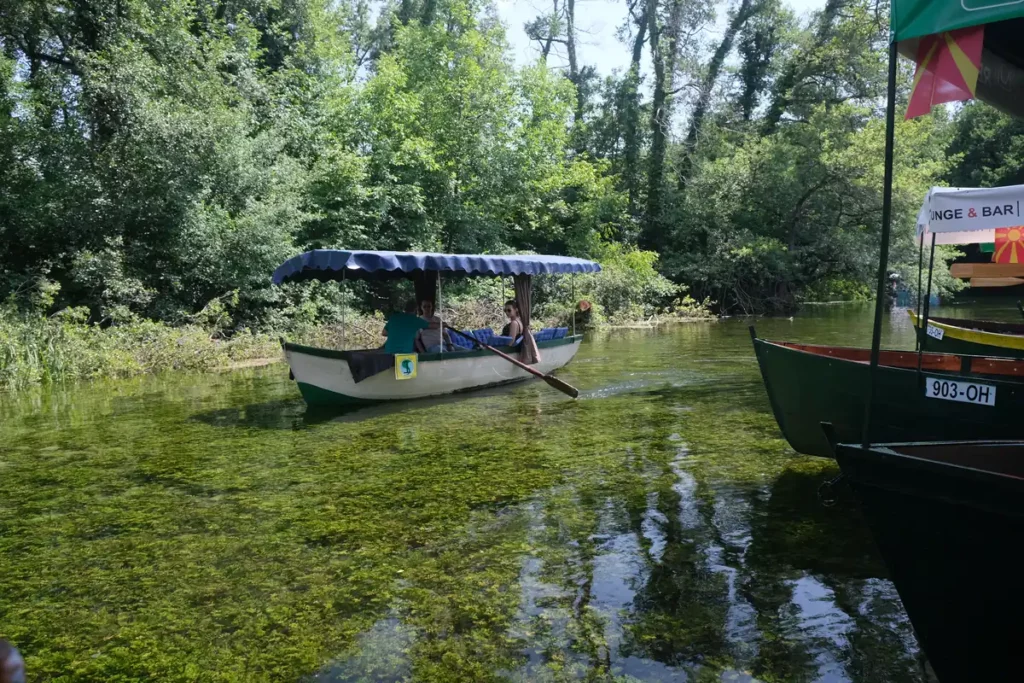
I chose to walk to see the springs and it was very pretty, with lots of birdsong and colourful dragonflies. The walk is less popular than the rowing boats and we had the path to ourselves for most of the route. The actual source of the springs is in an area where the rowing boats can’t go, and it was very beautiful and peaceful. I highly recommend wearing insect repellent though!
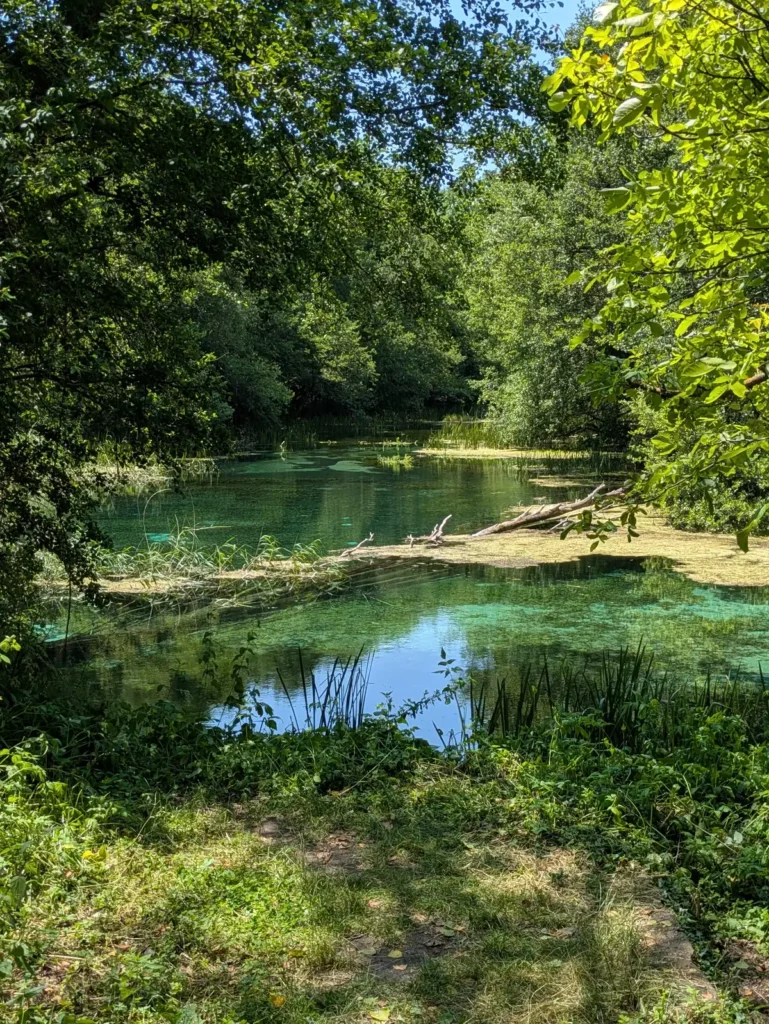
15. Visit a winery
Did you know that North Macedonia produces wine? The mountainous landscape offers lots of opportunities for growing local and international varieties of grapes, with the vranec grape being one of the most popular.
There are several wineries in and around Ohrid where you can try local wines, including one at a monastery and others where you visit family-owned vineyards, see how the wine is made and sample the finished product.
16. Go back in time at the Bay of Bones
The Bay of Bones is a museum complex on the shore of Lake Ohrid, where they’ve recreated a Bronze Age village built on stilts over the lake. There were several of these prehistoric settlements around the lake and archaeologists have recovered over 6,000 piles, along with ceramics, stone tools and animal bones.
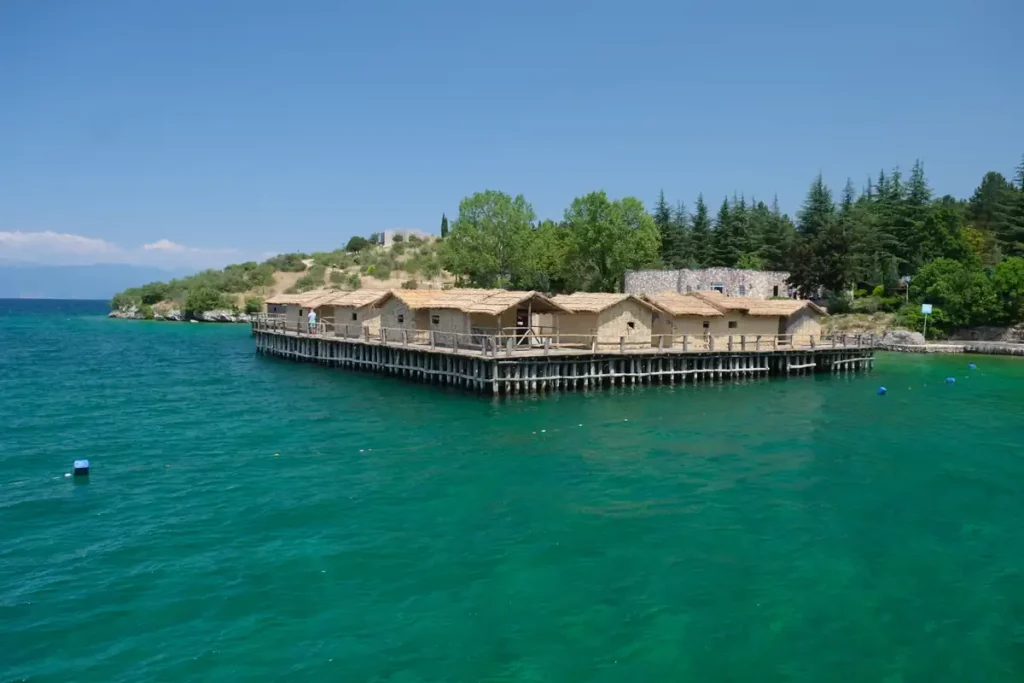
For a small entry fee, you can wander around the reconstructed village houses and see how the inhabitants would have lived. There’s a small museum displaying some of the objects that have been found, and when I visited it looked like the visitor centre was undergoing improvements. There’s a reconstructed Roman fort a little further up the hill from the prehistoric village.
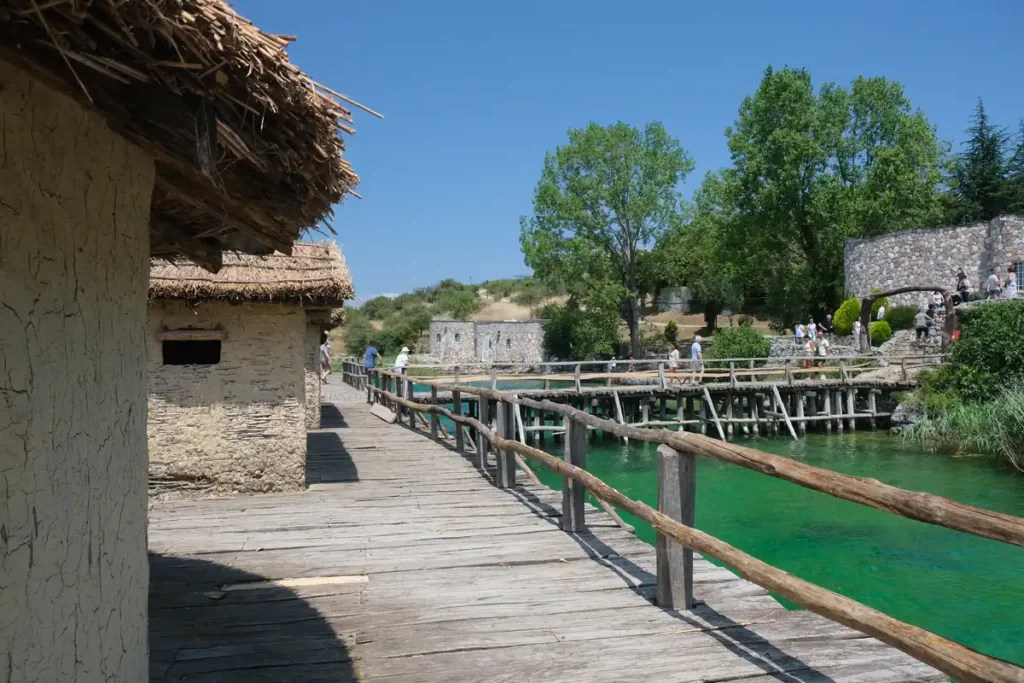
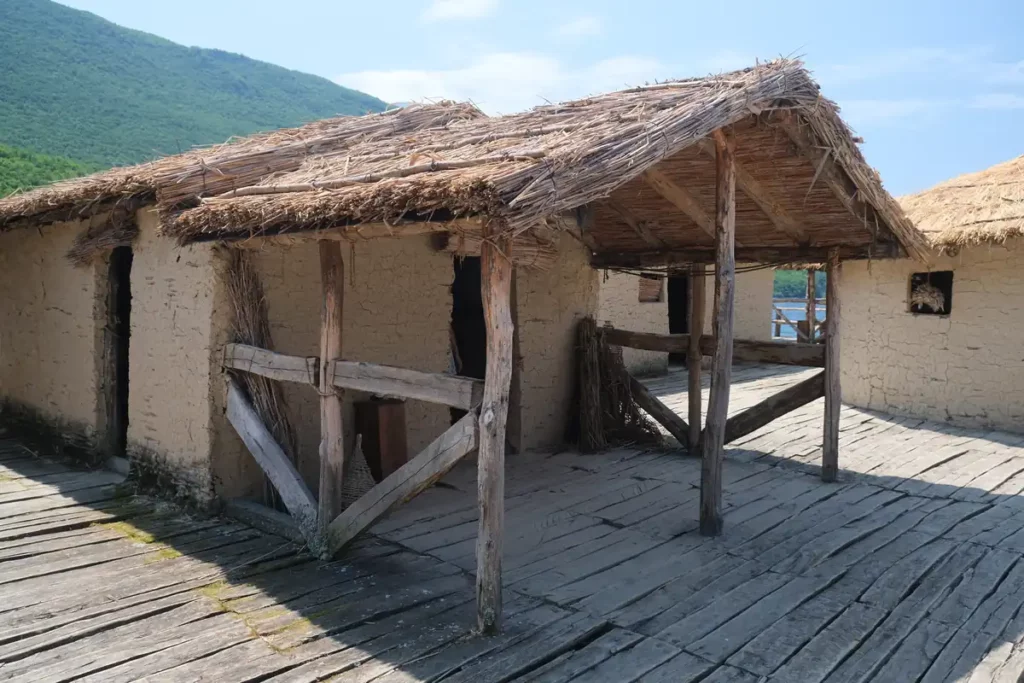
I visited the Bay of Bones by boat on the way to St Naum. Many of the boat trips to St Naum make a short stop at the Bay of Bones but it’s worth checking that the one you’re planning to take includes a stop here.
17. See inside the Robevci Family House
Note: the Robevci Family House is currently closed for renovation work
If you’re as intrigued as I was by the traditional three storey houses in Ohrid’s old town, visit the Robevci Family House. Built in the 1800s as a pair of houses for the families of two wealthy brothers, the Robevci Family House is a museum where you can see the restored interior along with artefacts telling the story of Ohrid.
18. Enjoy a sunset cruise on Lake Ohrid
The old town in Ohrid has a lovely setting, but it does lack a beautiful sunset. The sun sets behind the Samuel’s Fortress hill, meaning that it isn’t visible from the town itself.
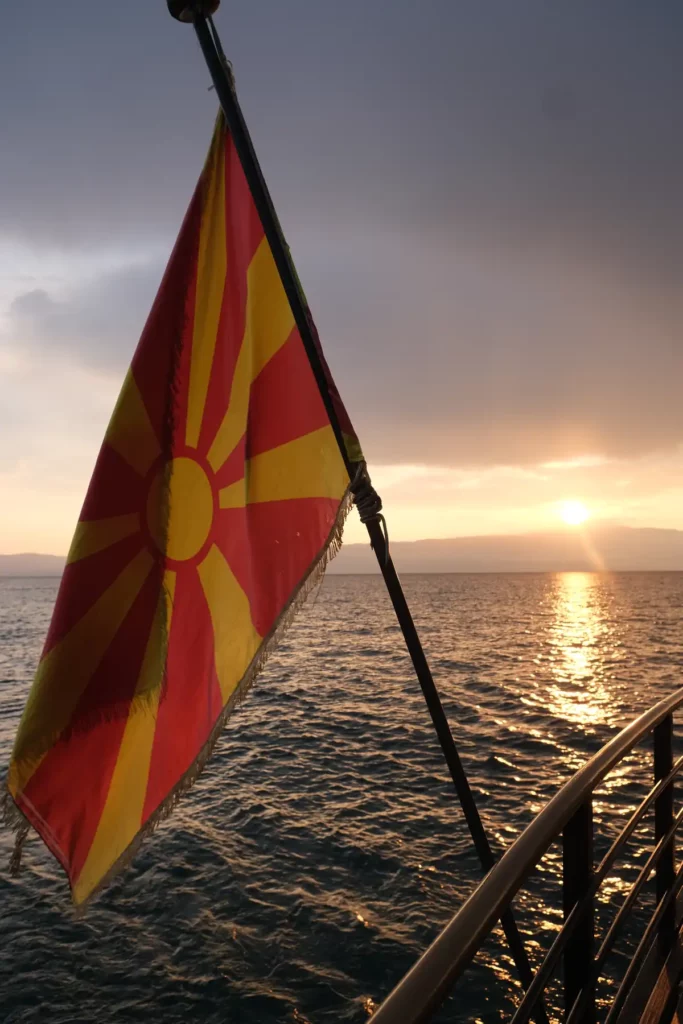
To see the sun set, you can go to St John’s church, go further round the bay to the east or take a sunset cruise. I took a 90 minute sunset cruise with Armada Cruises which took a route by St John’s church and Kaneo Beach, then out into the middle of the lake to see the sun set behind the mountains on the western side of the lake. We were welcomed on board with a glass of Champagne and the whole experience was really nice.
19. Explore Galicica National Park
Not to be confused with Galicia in Spain, the Galicica National Park in Macedonia covers the mountainous area between Lake Ohrid and Lake Prespa.
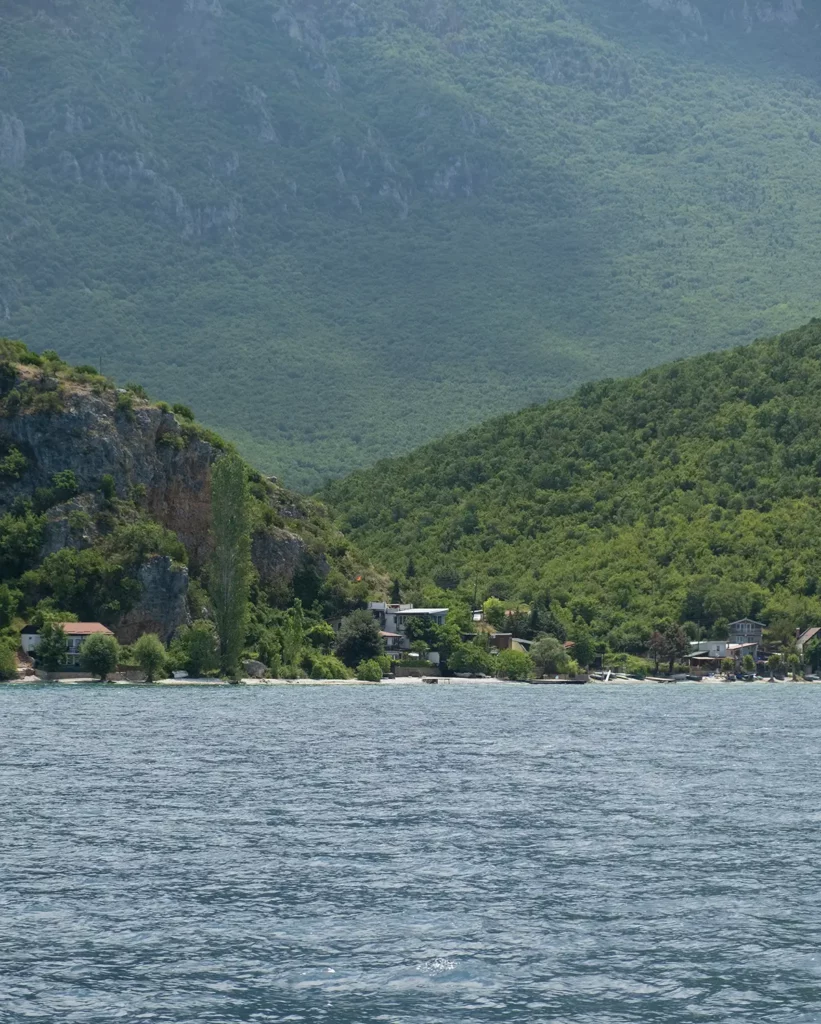
If you’re into hiking or mountain biking then you’ll be in heaven, with with spectacular views across the two lakes. If you fancy a more exciting day out you can book a tour where you drive through the mountains in all terrain vehicles (ATV), and you can even go paragliding to see Lake Ohrid from above.
20. Take a day trip to Albania
Around a third of Lake Ohrid is in Albania, so crossing another country off your list can be as easy as crossing the border near Saint Naum Monastery. The Albanian capital Tirana is just 2.5 hours away by car and there are multiple coaches each day making the journey from Ohrid bus station to Tirana.
Tirana’s main city centre attractions are all within walking distance of each other so definitely doable as a day trip or overnight stay. Alternatively you could fly into Ohrid and out of Tirana, or vice versa.

If you just want to get a taste of Albania, you can take a day trip to see the Albanian side of the lake and learn a little more about this mysterious country. Unlike Macedonia, Albania was not part of Yugoslavia and was actually closed off from the world for nearly half a century. On a day trip to Albania from Ohrid you can see some of the bunkers that cover Albania and hear more about the fascinating history of the region.
How to get to Ohrid
By plane
Ohrid has a tiny international airport around 20 minutes from the old town on the way to Struga. I flew direct to Ohrid from Manchester with TUI Airways. TUI also have package holidays to Ohrid.

Ohrid St Paul the Apostle Airport is also served by flights from Turkish Airlines, Wizz Air and Chair Airlines.
If your local airport doesn’t have flights to Ohrid, the next nearest airports are the Macedonian capital Skopje and Tirana in Albania.
There’s no real arrivals area at Ohrid Airport, so if you’ve booked a taxi, you’ll meet your driver outside by the coffee bar. There are no buses between the airport and the city so a taxi is your only option.

The departures area is very small with nowhere to buy food, so you should either bring something to snack on or eat before you get here. The little duty free shop does have some Macedonian specialities and a single variety of Pringles if you get desperate. There’s a very limited bar for drinks.
Even though departures is tiny, you should still get to the airport in plenty of time as you’ll need to pick up a boarding pass (digital boarding passes aren’t accepted). Latecomers will struggle to find somewhere to sit while you wait.
By bus from Skopje
There are multiple buses each day from the Macedonian capital Skopje to Ohrid. The journey takes around 3 hours. Buses arrive at Ohrid’s bus station (Google Maps link) on the edge of the city.
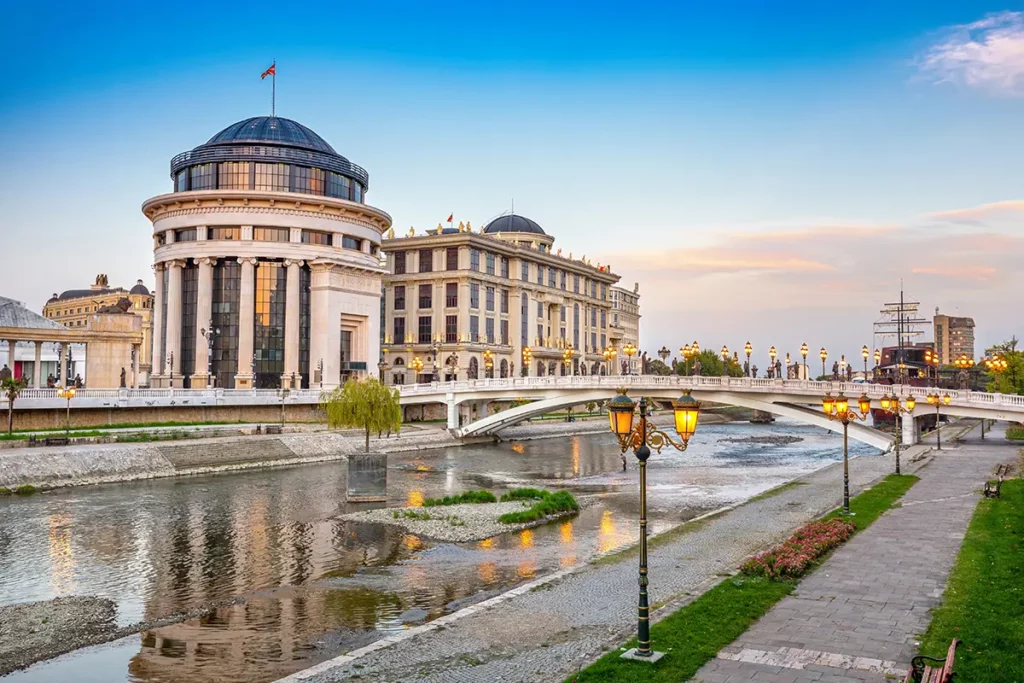
By bus from Tirana
I hadn’t realised quite how close Ohrid was to Tirana in Albania – I should really have made it an open-jaw trip and flown in into Tirana and out of Ohrid. There are daily buses from Tirana to Ohrid taking around 3 hours.
By car
If you’ll be arriving in Ohrid by car and are staying in the old town, I highly recommend parking outside and walking in. Yes, you’ll have to carry your luggage to your accommodation but the old town streets are exceptionally narrow and trying to navigate them in a hire car is a sure-fire ticket to stress-induced arguments and losing your insurance deposit. Strongly do not recommend.
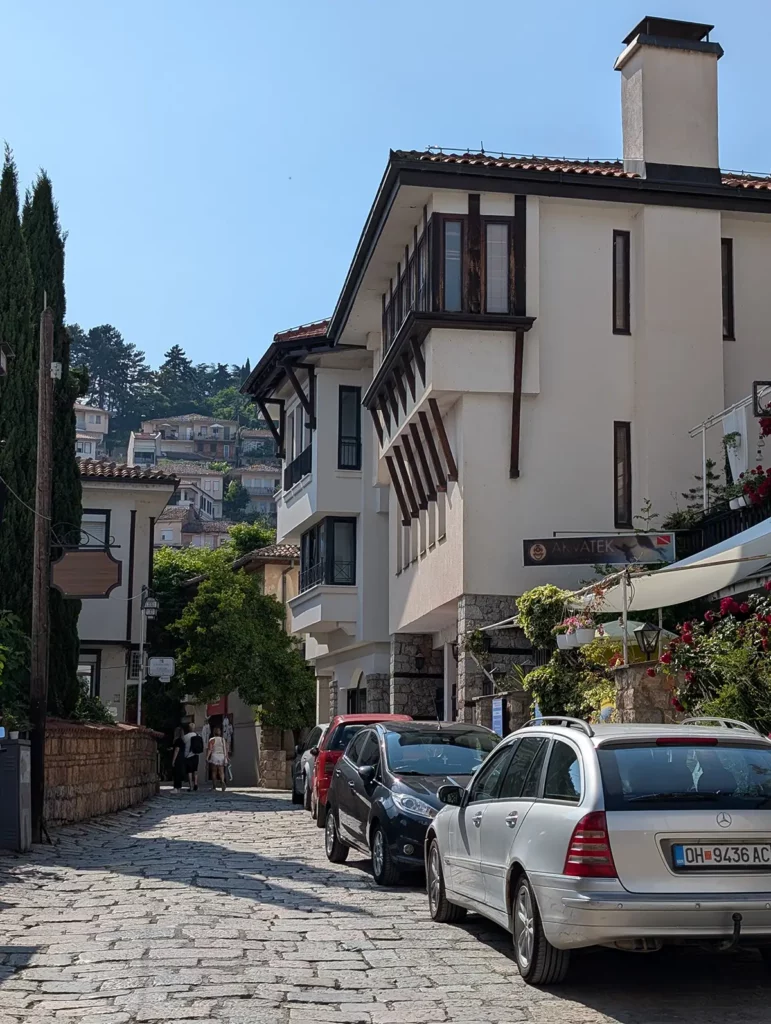
The newer part of town is a bit better but still busy. Some accommodation comes with allocated parking either on site or in public car parks.
Where to stay in Ohrid
The best place to stay in Ohrid is either in the old town or around the port. Accommodation in the old town is mostly self-catering apartments but there are hotels on and around the lakefront promenade leading south from the port.
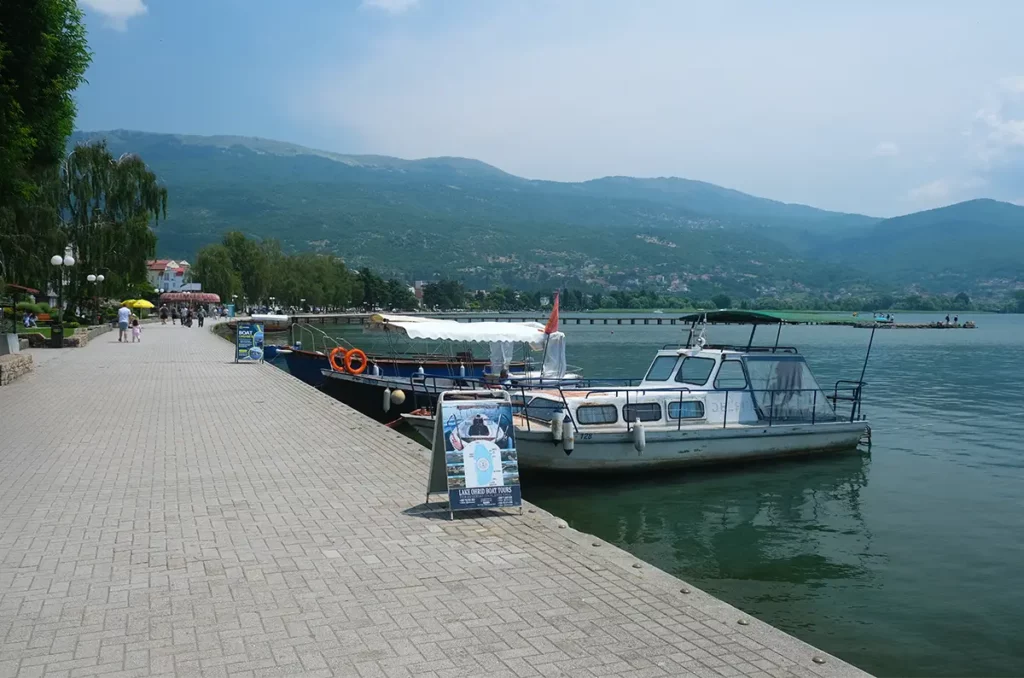
I stayed in the penthouse apartment at Villa Varosh near the Church of Saint Sophia and the boardwalk, and I couldn’t recommend it more highly. The view from our terrace over the church and old town rooftops towards the lake was absolutely stunning, and we had bonus views towards Samuel’s Fortress and the port.
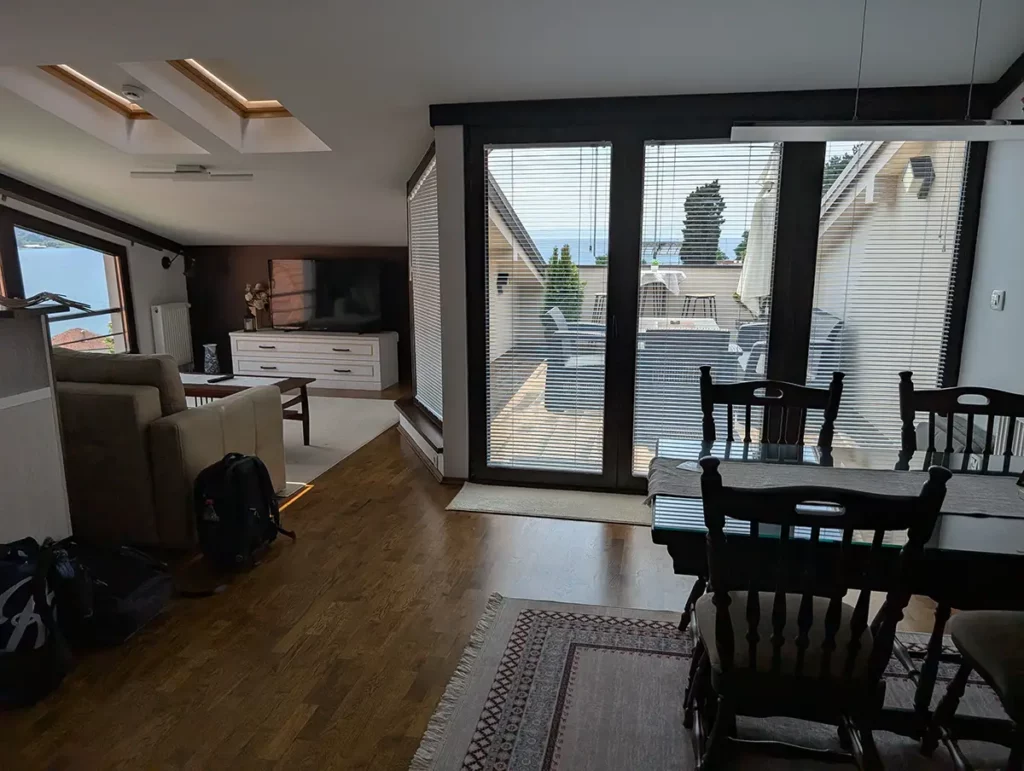
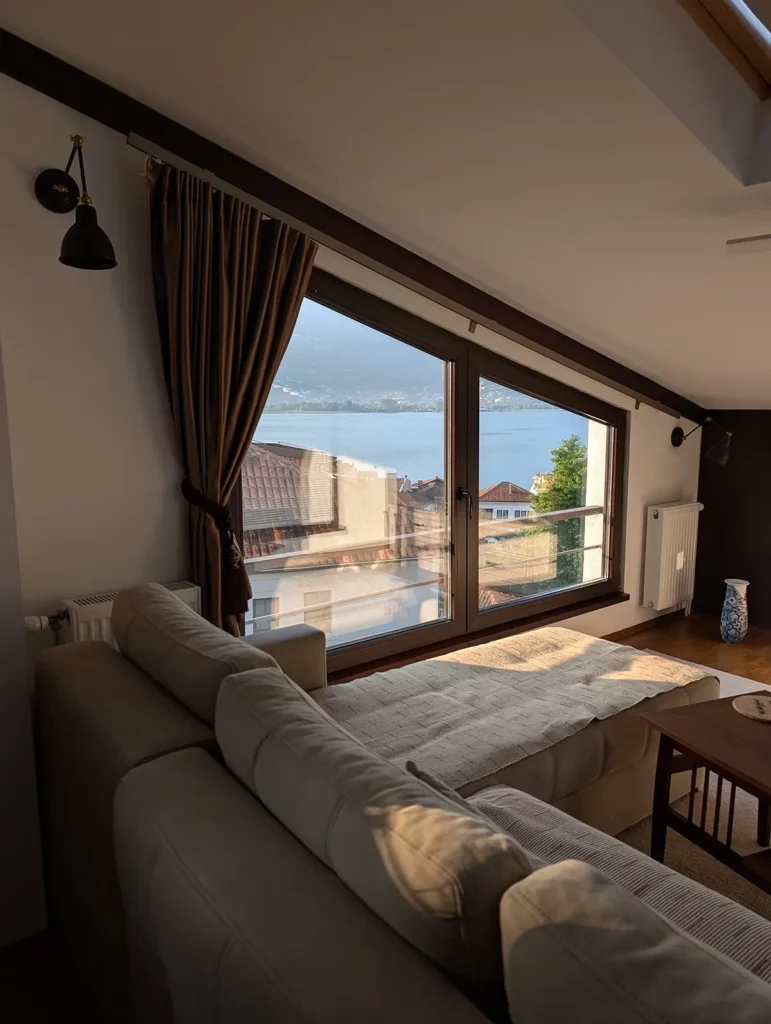
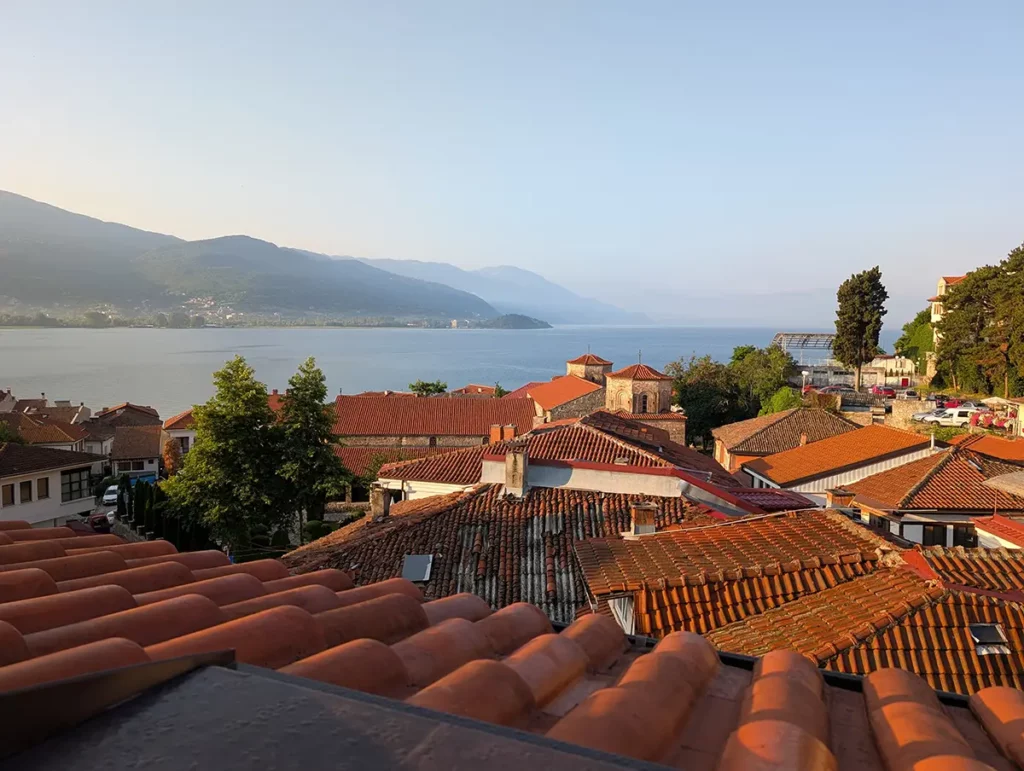
The bed was comfortable, the kitchen was well-appointed and I loved the spacious living area. Villa Varosh is absolutely one of the best places I’ve ever stayed.
I did push the boat out a little to stay at Villa Varosh, but Ohrid is still very affordable. My 4 night stay in the penthouse apartment cost around £100 per night, but I could have got an apartment elsewhere for only a little more than £100 for my whole trip.
If you or someone you’re with struggles with steps or hills, try to stay within a street or two of the lake, and no further west than Saint Sophia church. Beyond this point, the hill starts to rise up steeply towards Samuel’s Fortress. The newer part of town is much flatter.
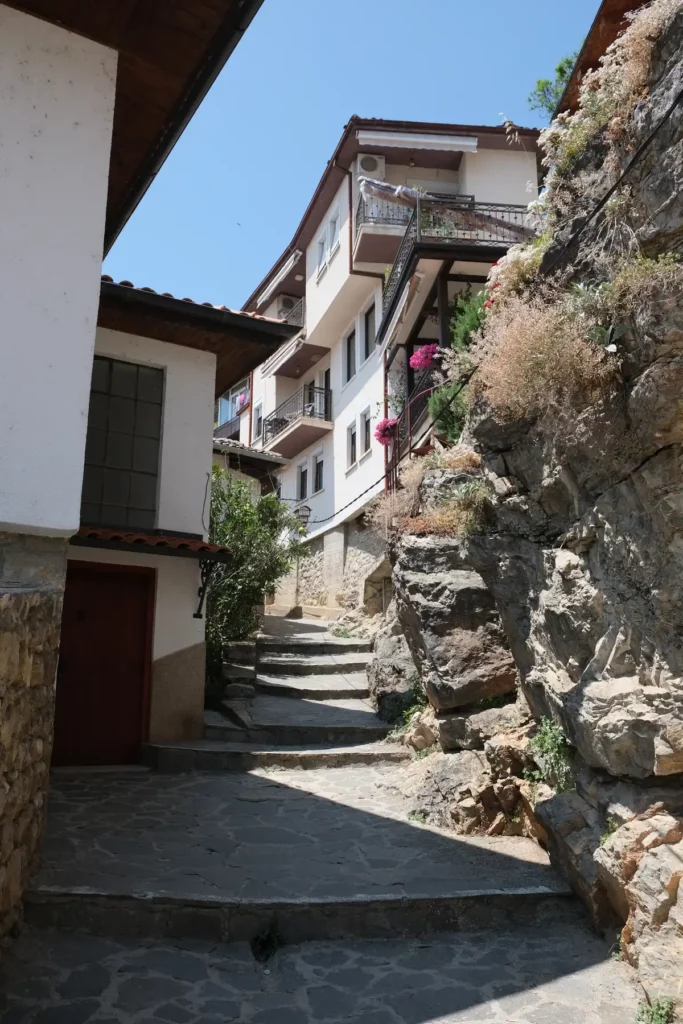
How long to stay in Ohrid
As you’ve seen in this post, there are plenty of things to do in Ohrid. I stayed for 4 nights and had 3 full days in Ohrid, which was just right for me.
On days 1 and 2 we explored the city and did a sunset cruise, and on day 3 we did a day trip to St Naum, the Black Drin Springs and the Bay of Bones. If you’re visiting in summer and love the beach, you could easily add on a few beach days.
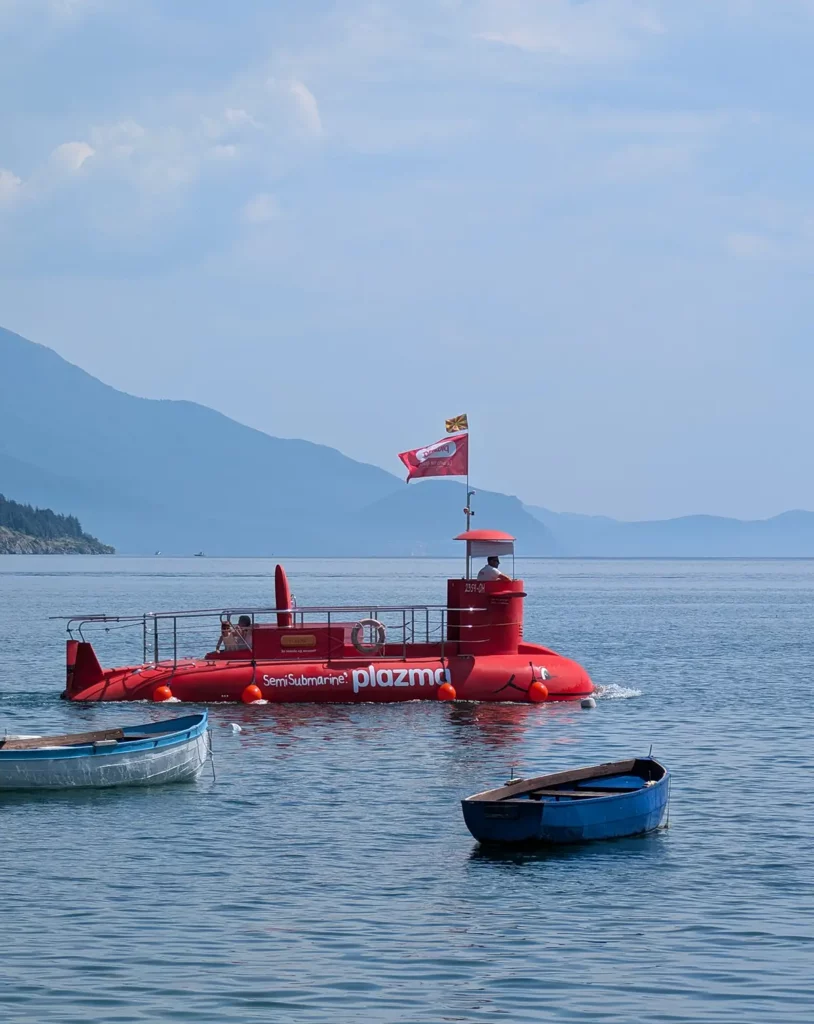
I see lots of people only spending one day in Ohrid on their way from Skopje to Tirana and the Albanian Riviera. In my opinion that isn’t quite long enough to do justice to this lovely part of the Balkans.
While Ohrid is compact and you can see most of the major sights in one day, it’s also beautifully relaxing and it’d be a shame just to rush round the attractions. It’s the perfect antidote to the relentless energy of the Albanian and Macedonian capitals.
When to go to Ohrid
You can visit Ohrid all year round. Since it’s a working town rather than a resort, shops and restaurants stay open all year, although some hotels may close over the winter.
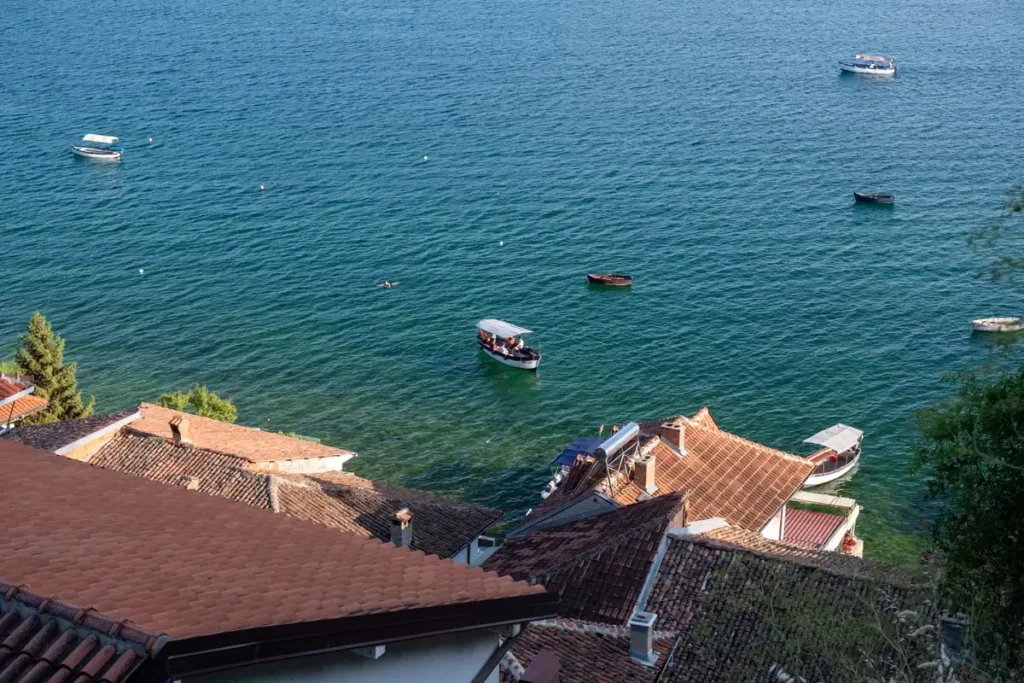
Ohrid has a Mediterranean climate in the summer and a cold, mountain climate in the winter. It can snow during the winter and the mountain road in the Galicica National Park is closed, but all the other things to do in Ohrid are still open.
The peak summer months can be very hot, but it’s lovely beach weather and you can cool off in the lake. Summer is also when Ohrid comes alive with festivals, from folk music to classical and dance music.
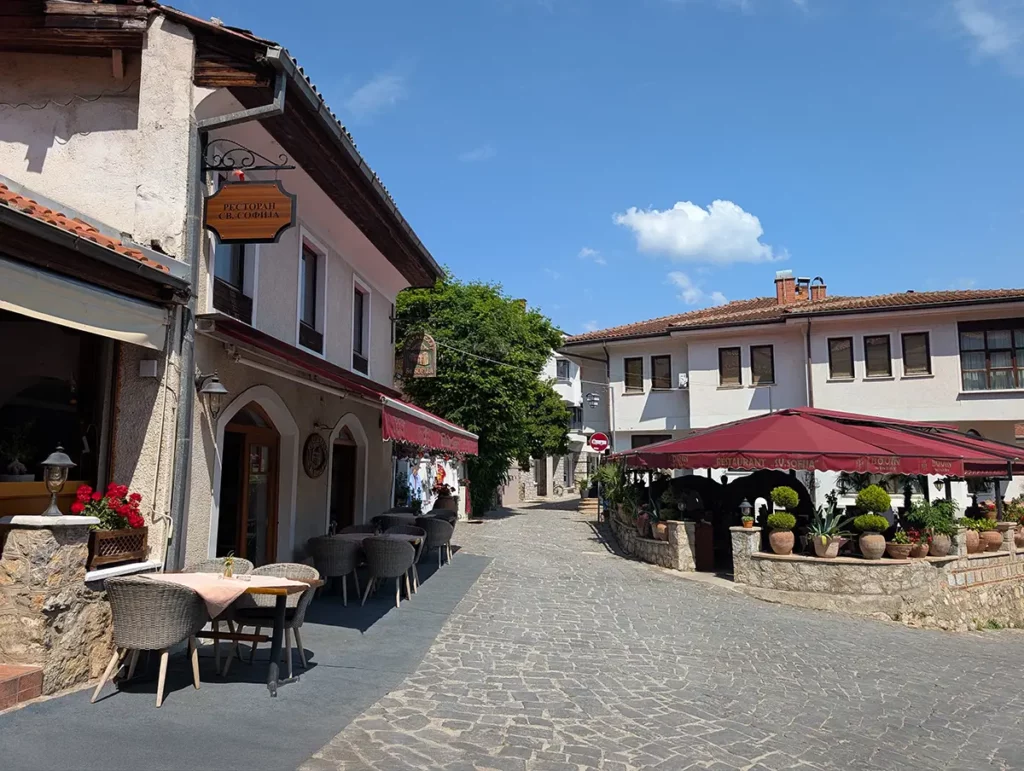
The shoulder seasons (May and June, and September and October) are the perfect time to visit Ohrid. The weather is warm enough to enjoy being outside but not yet too hot to climb Ohrid’s many steep hills!
Is visiting Ohrid worth it?
If you’re looking for a lake trip that’s a little different to the ordinary Italian lakes or Swiss destinations, with lots of charm, gorgeous scenery, good food and plenty of things to see and do, you should definitely give Lake Ohrid a try.
I really enjoyed my trip to Ohrid; it was the perfect combination of relaxation and activities. Whether you visit Ohrid as a one-stop destination or as part of a wider Balkans trip, you’ll love your trip to this lovely part of Macedonia.

